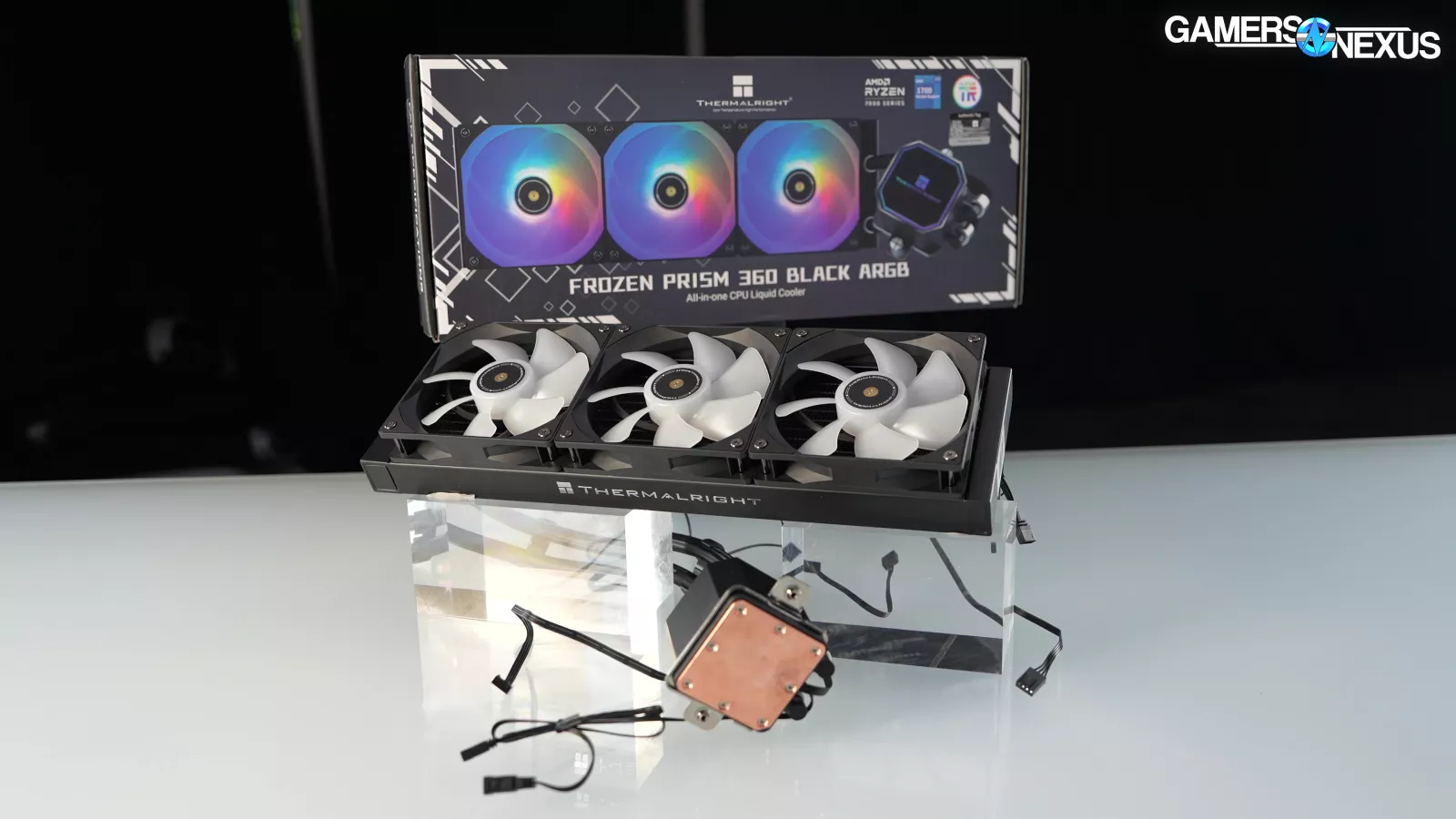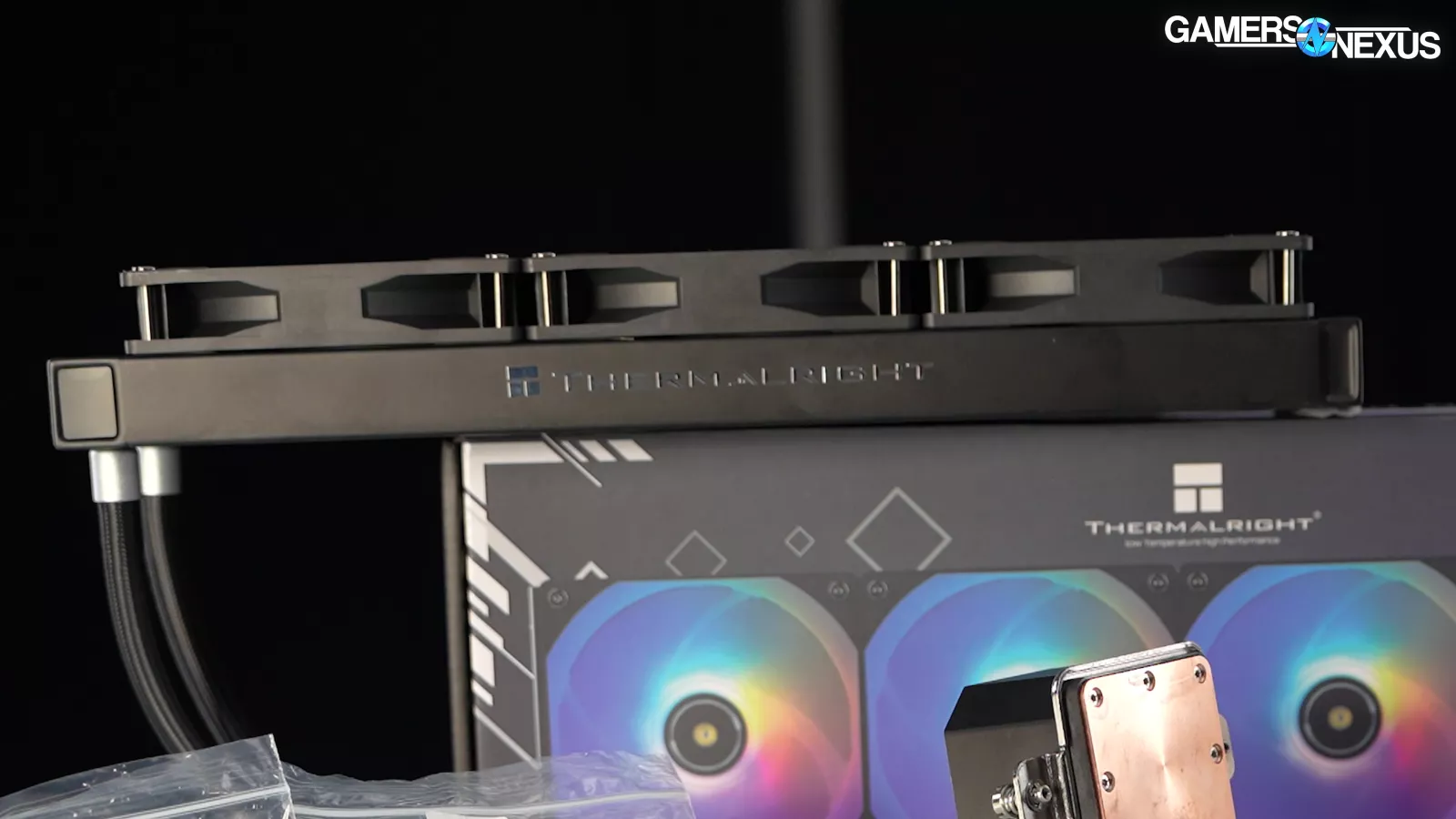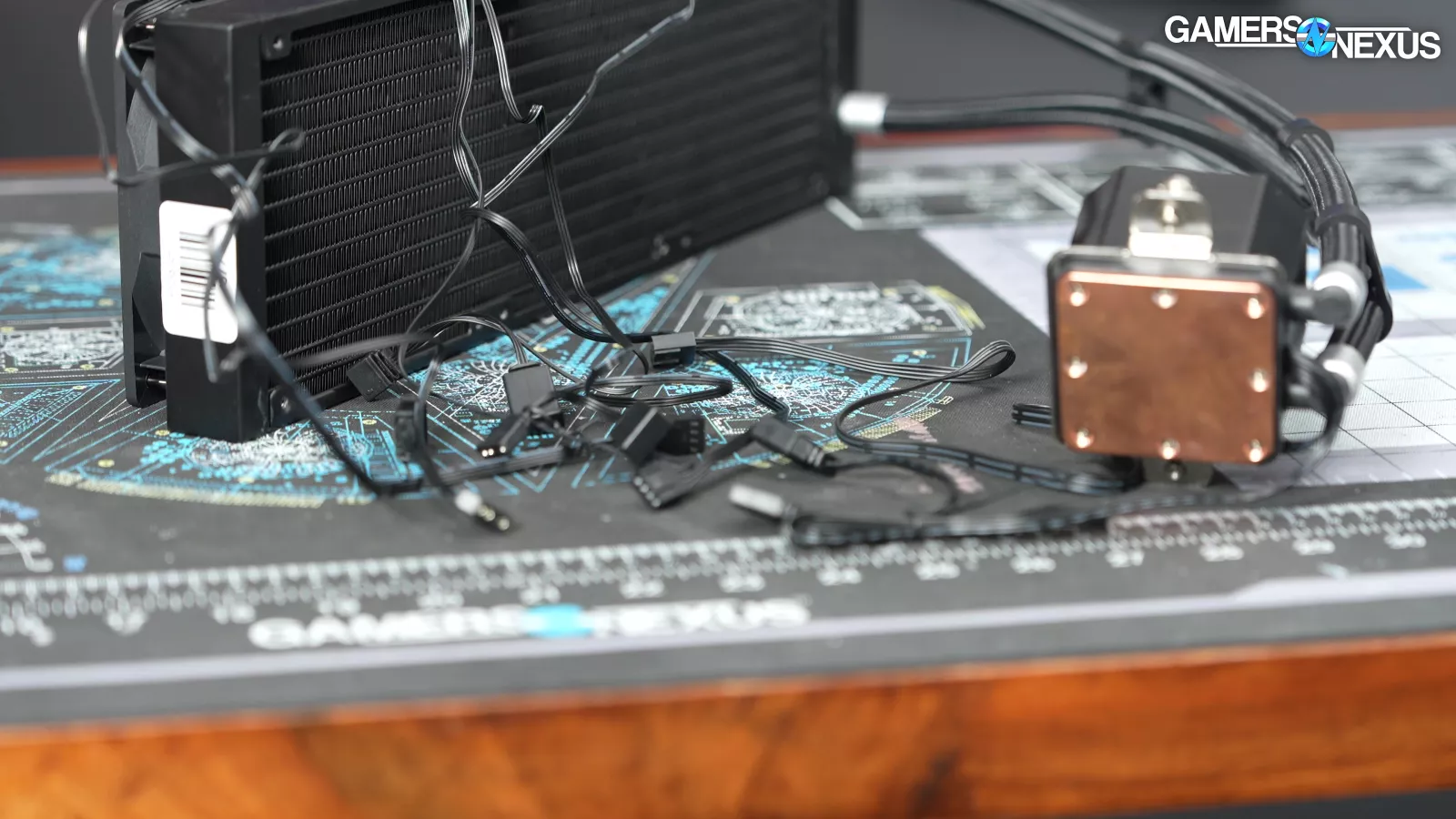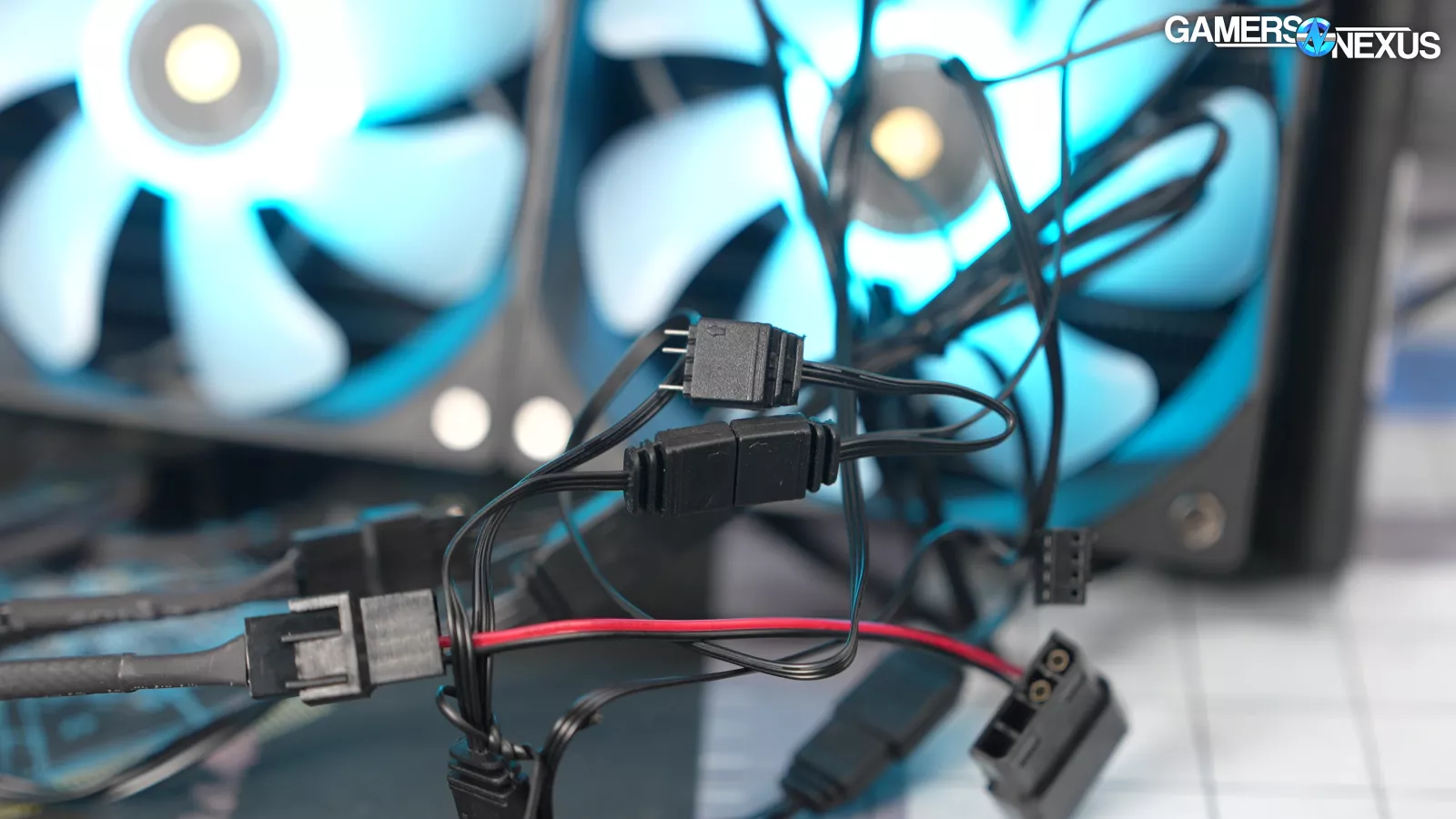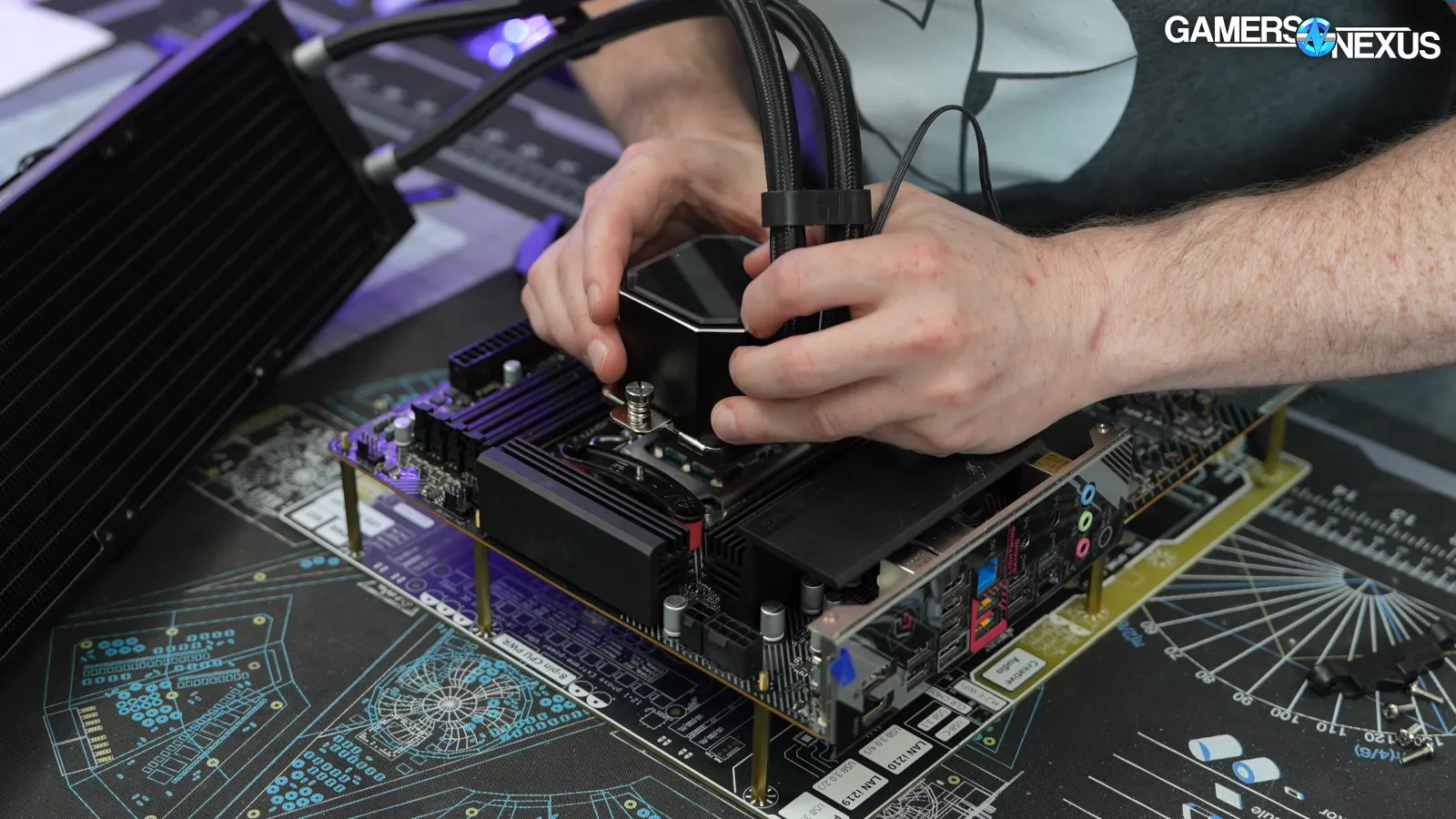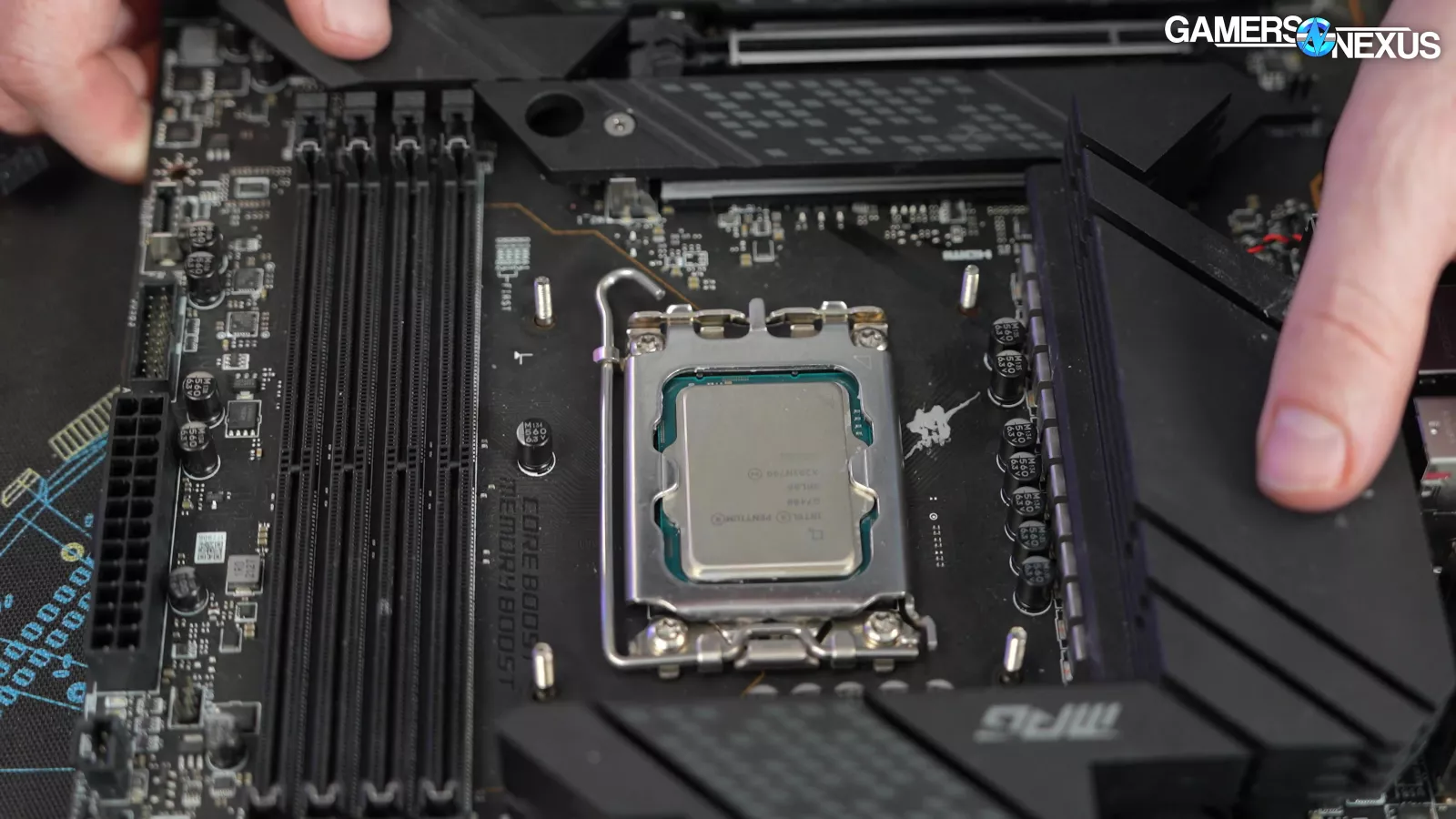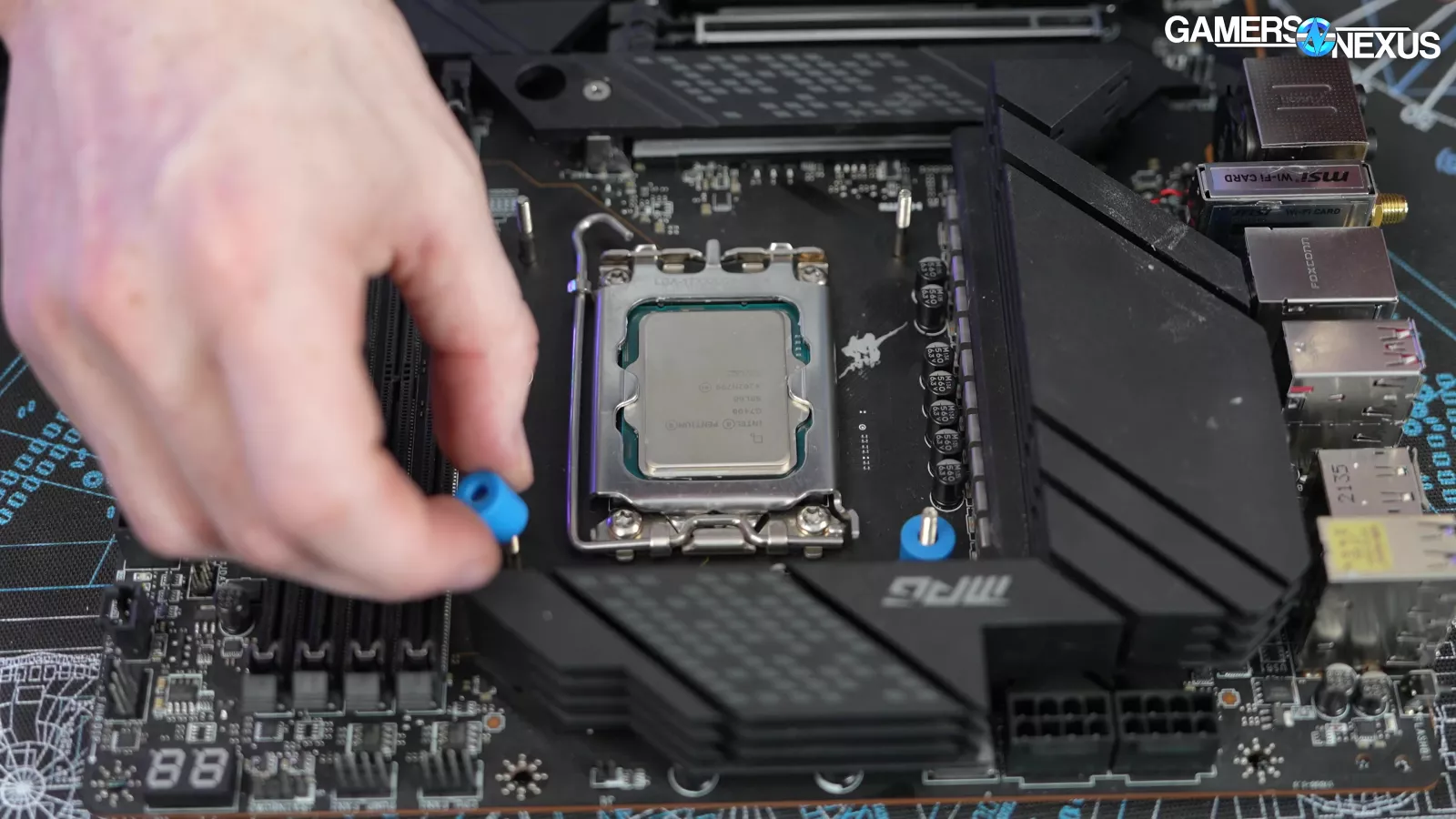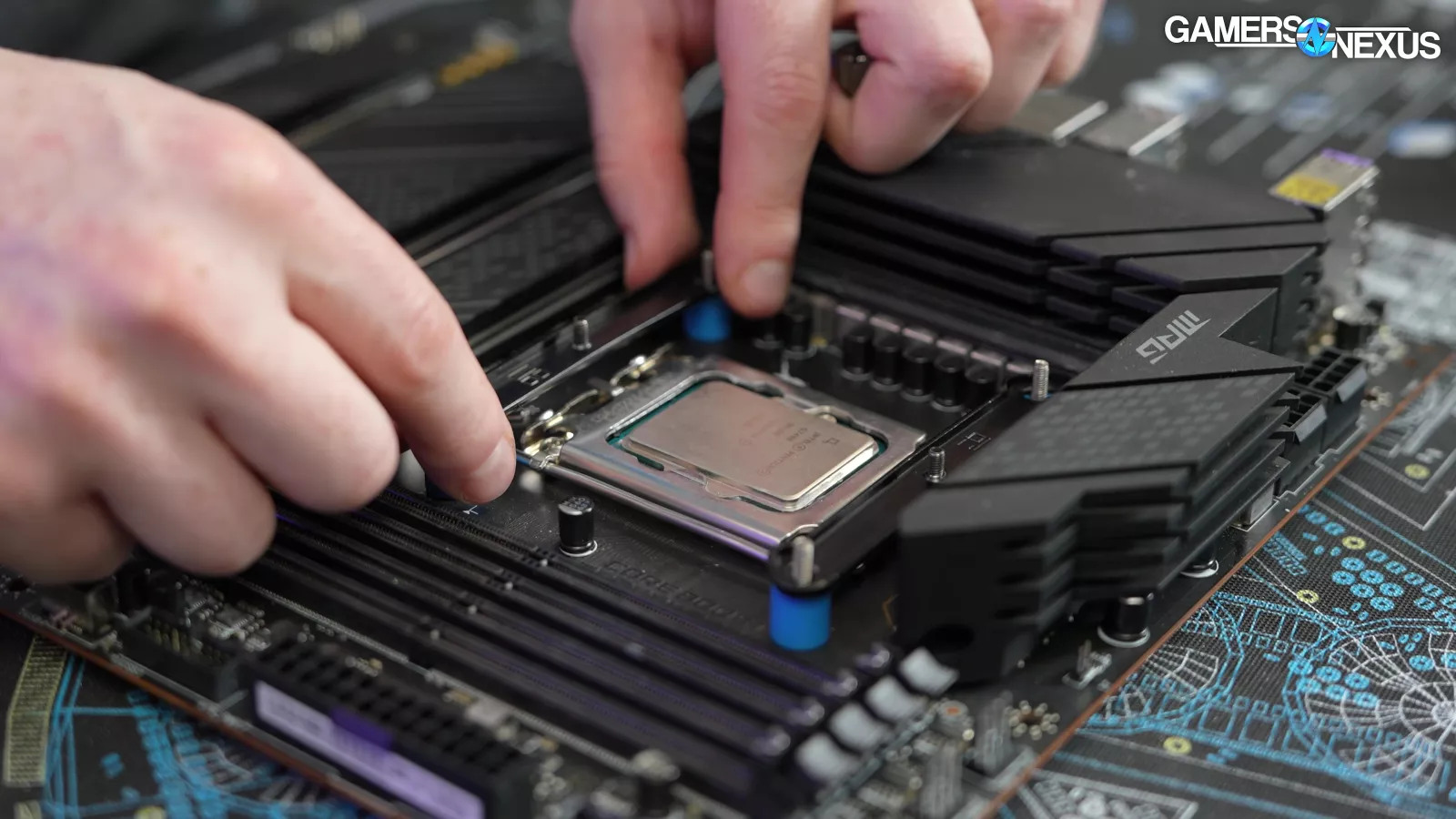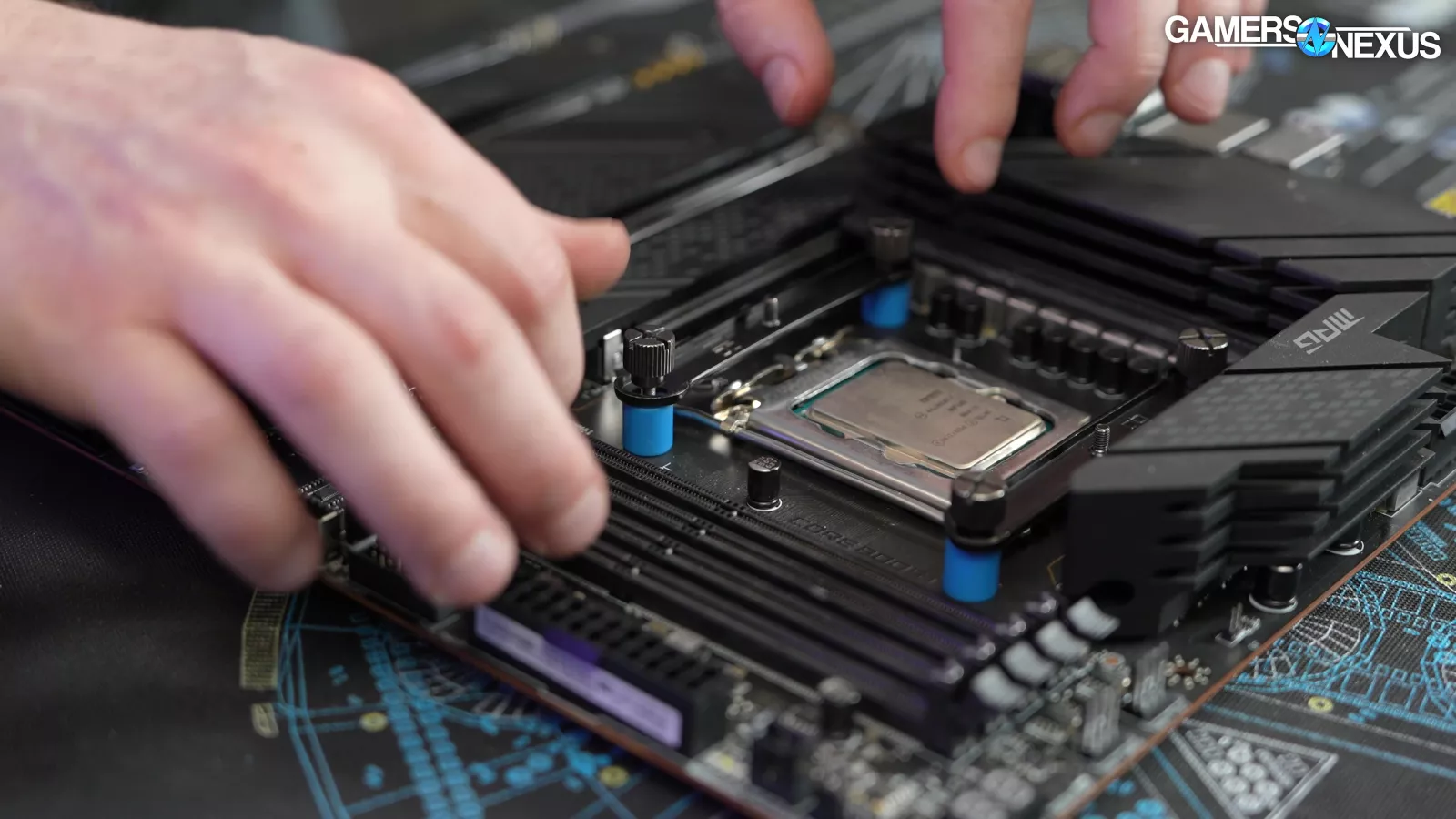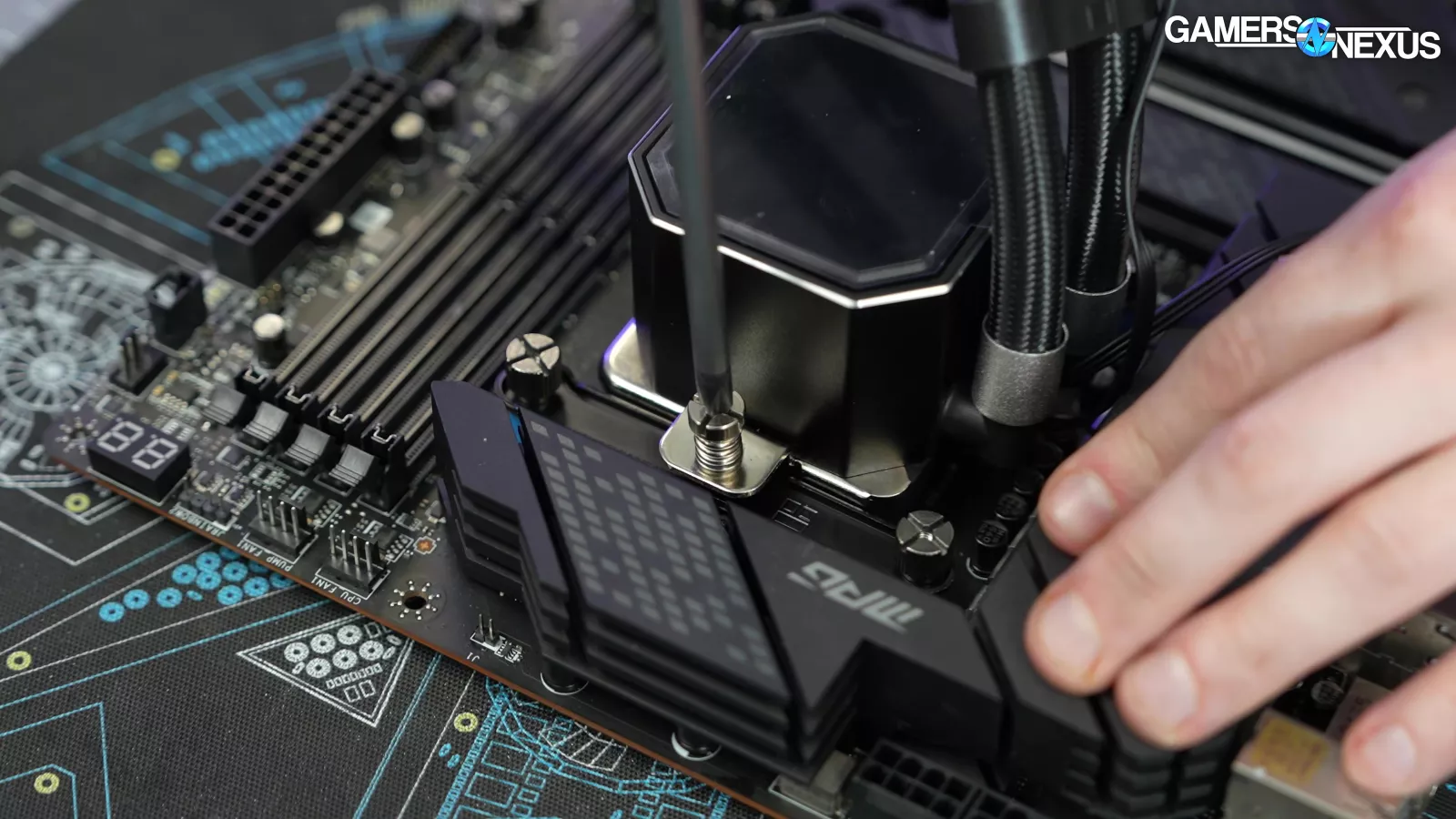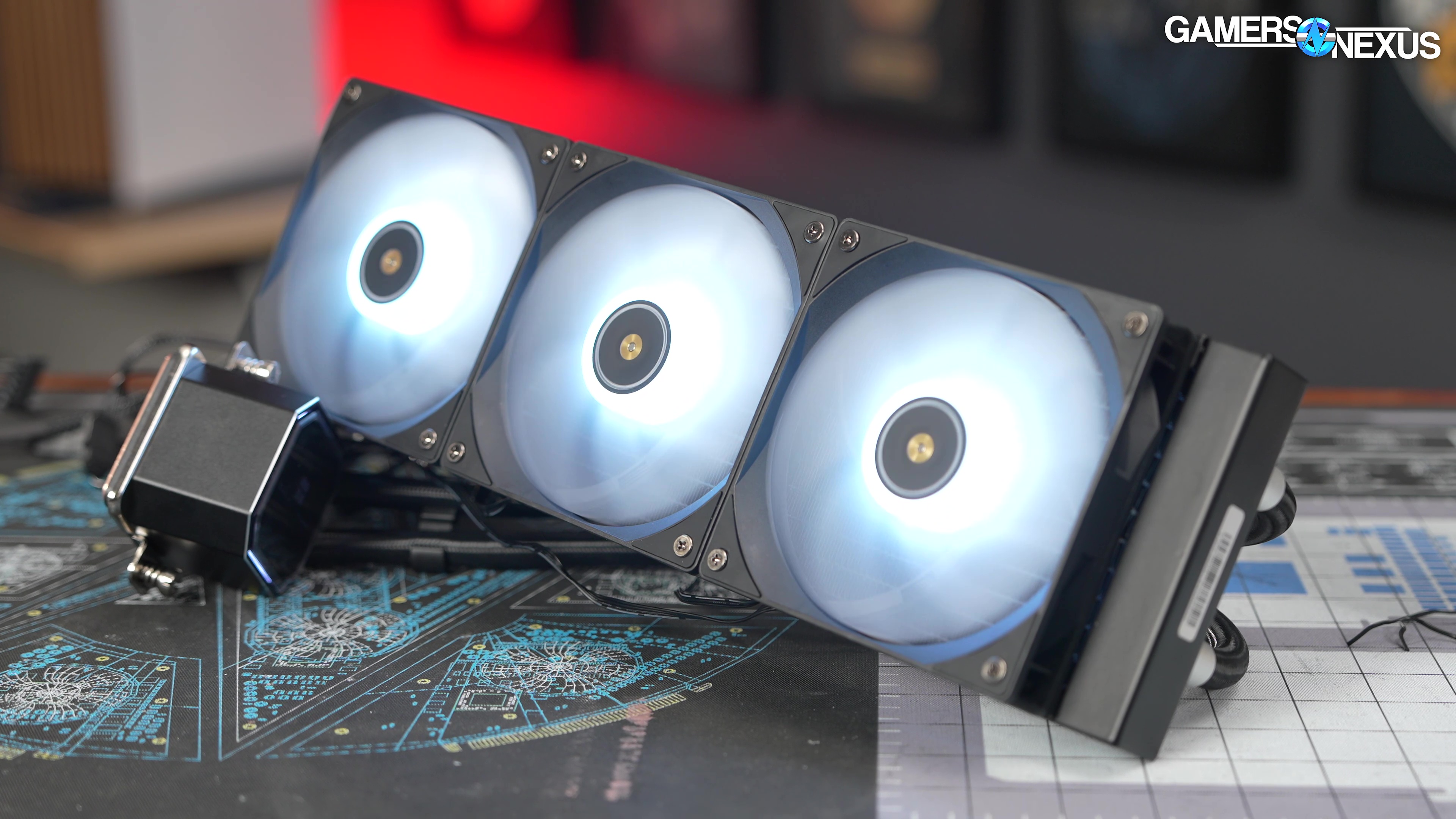
We put Thermalright’s budget liquid cooler through thermal tests, laser scans, pressure scans, and more
The Highlights
- The Thermalright Frozen Prism 360 is one of the cheapest liquid coolers from an established brand
- Acoustically, the water cooler is not a strong performer
- At around $60, the Thermalright Frozen Prism 360 outperforms air coolers and is hard to beat in terms of value
- Original MSRP: $60.59
Table of Contents
- AutoTOC
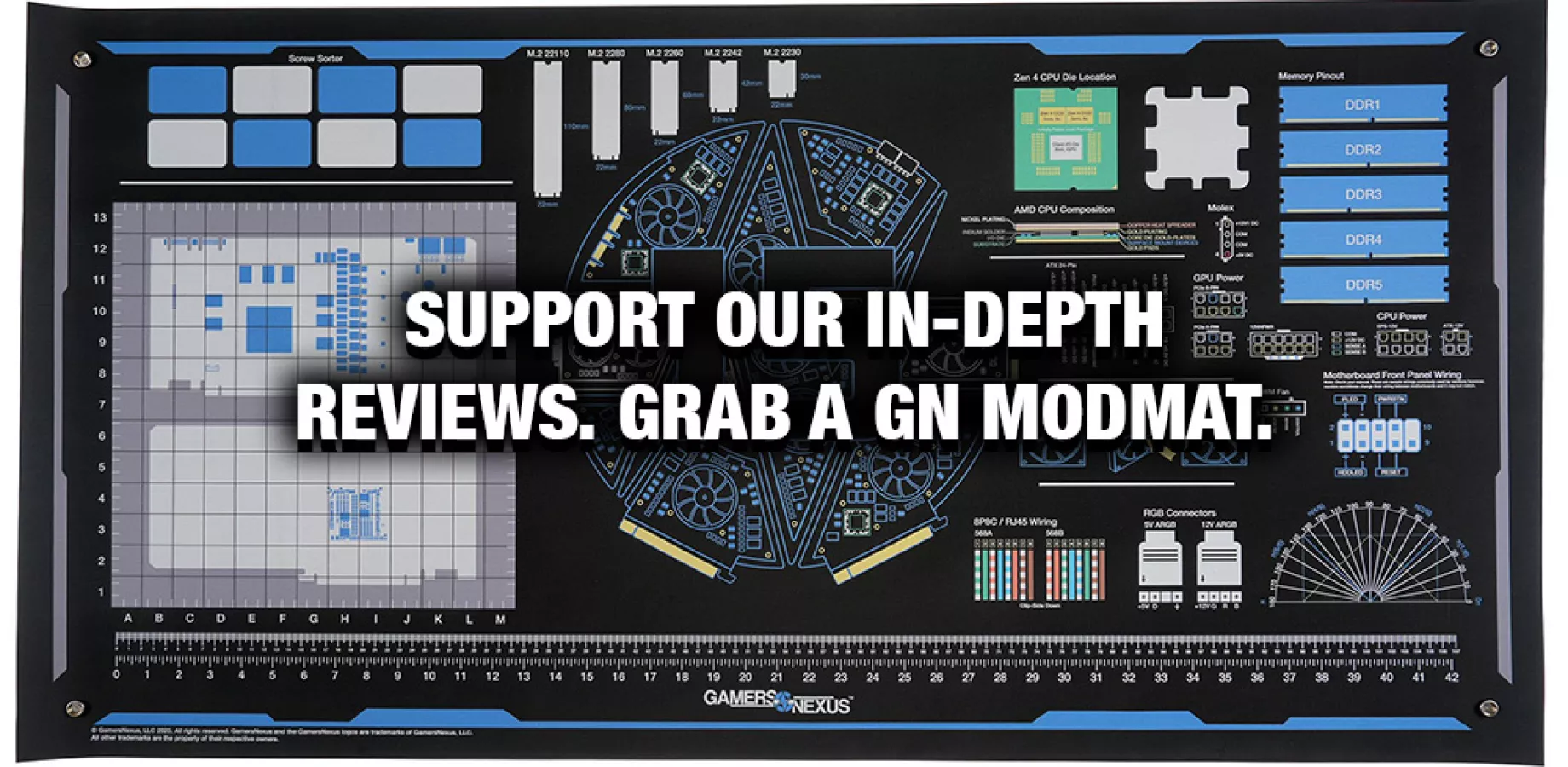
Intro
Today we’re reviewing one of the cheapest liquid coolers from an established brand in the Thermalright Frozen Prism 360 Black ARGB, which cost $60.59. There’s also a cheaper version without LEDs that cost $56.09.
And as you will see in our 3D laser scan, it also has a heavy focus on protruding the cold plate towards the IHS. This should benefit its cooling by focusing contact on the silicon area. Confusingly, Thermalright also has several liquid coolers at similar prices and released relatively near this one. It has the Thermalright Frozen Notte, the Aqua Elite, the Frozen Infinity, the Mjolnir Vision, Core Vision, Warframe Pro, Warframe Black X, Frozen Guardian, and 3 more product pages of variations on these.
Editor's note: This was originally published on June 30, 2024 as a video. This content has been adapted to written format for this article and is unchanged from the original publication.
Credits
Test Lead, Host, Writing
Steve Burke
Testing
Mike Gaglione
Camera, Video Editing
Vitalii Makhnovets
Writing, Web Editing
Jimmy Thang
Thermalright’s strategy has been to completely swarm the market with cheap solutions. Thus far, those solutions have been extremely competitive on performance as well. At least if you look at air coolers, which we’ve generally liked from Thermalright so far. The Peerless Assassin, for instance, has been one of our top recommendations for an air cooler since we bought it.
And now, we’re going to look at one of the cheapest (but still name-brand) coolers on the market. Oddly, its price competition is more in-line with air coolers than liquid. The Scythe FUMA 3 is around $50, the Thermalright Peerless Assassin is about $35, the Noctua NH-U12S Redux is $50-$55.
This will be an interesting one.
It’s a wonder how Thermalright is able to make any money at all with some of the prices, where it manages to undercut major cooler brands significantly. The big difference with liquid coolers versus air is one that we can’t reasonably test in a review window: If an air cooler works well, it’s unlikely to have any kind of long-term failures (other than maybe the fan, which is cheap to replace). Liquid coolers can have issues with gunk build-up, corrosion, or pump failures. Gunk build-up is the main concern and happens normally from chemical imbalances or poor flux work in the radiators. That’s not something we can evaluate in a review, and we’re frontloading that consideration because it just seems like the price would have to include some kind of downside.
Thermalright Frozen Prism 360 Overview
Here are the basics:
The cooler has a standard thickness radiator at about 25mm, or 27mm when counting the outer shell. It’s120x396mm for the actual radiator size, so Thermalright isn’t doing what the likes of Arctic or Hyte are doing by tweaking other dimensions to boost performance. This is dimensionally standard.
It also has a rat’s nest of cables, with 6 total coming out of the fan for the 360 model and another 2 out of the pump block. Thermalright doesn’t give any of the modern ease-of-installation features or daisy chaining solutions, which should be expected at around $60.
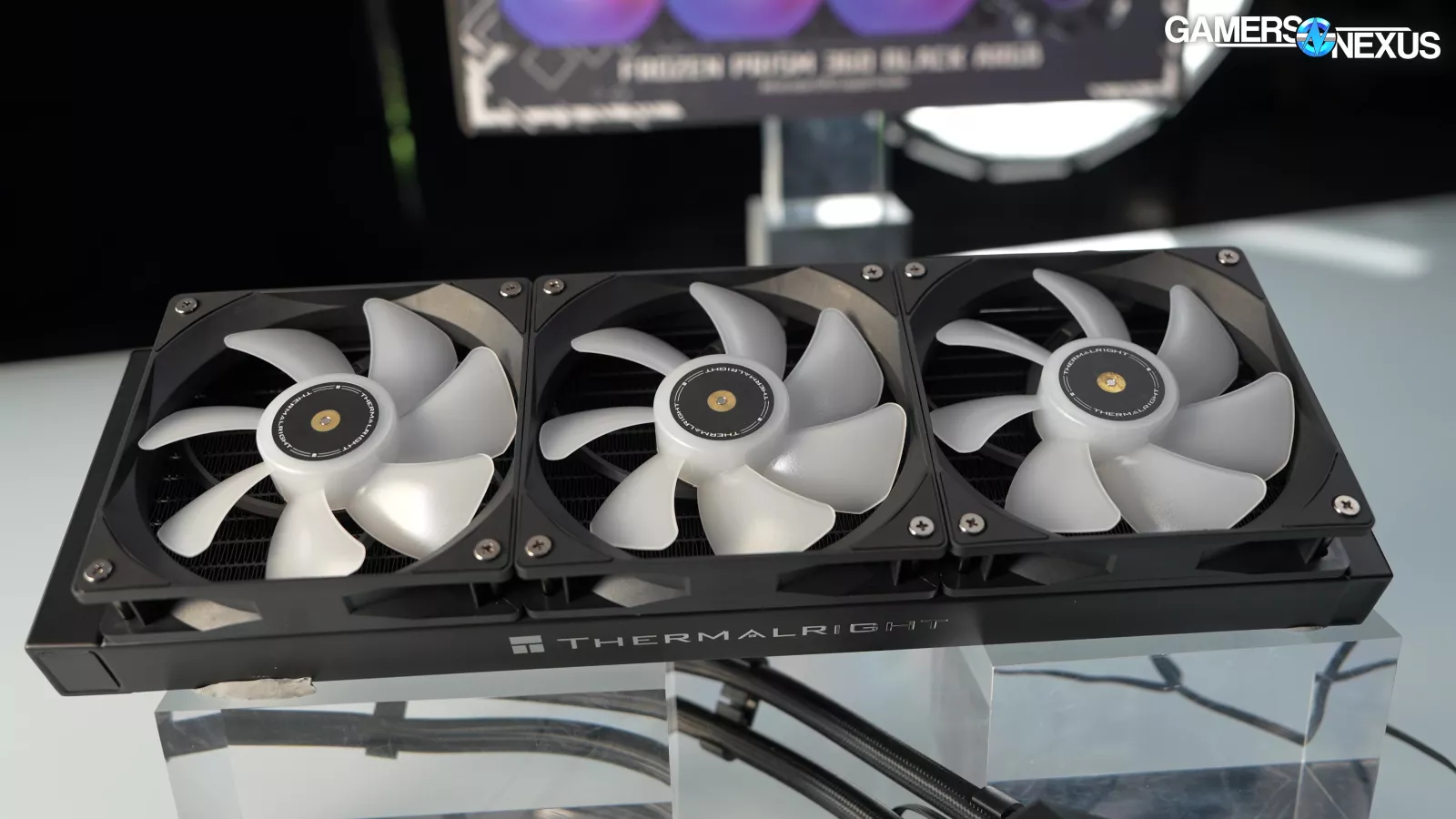
The fans are TL-E12 V2s, which have a maximum rated speed of 1850 RPM.
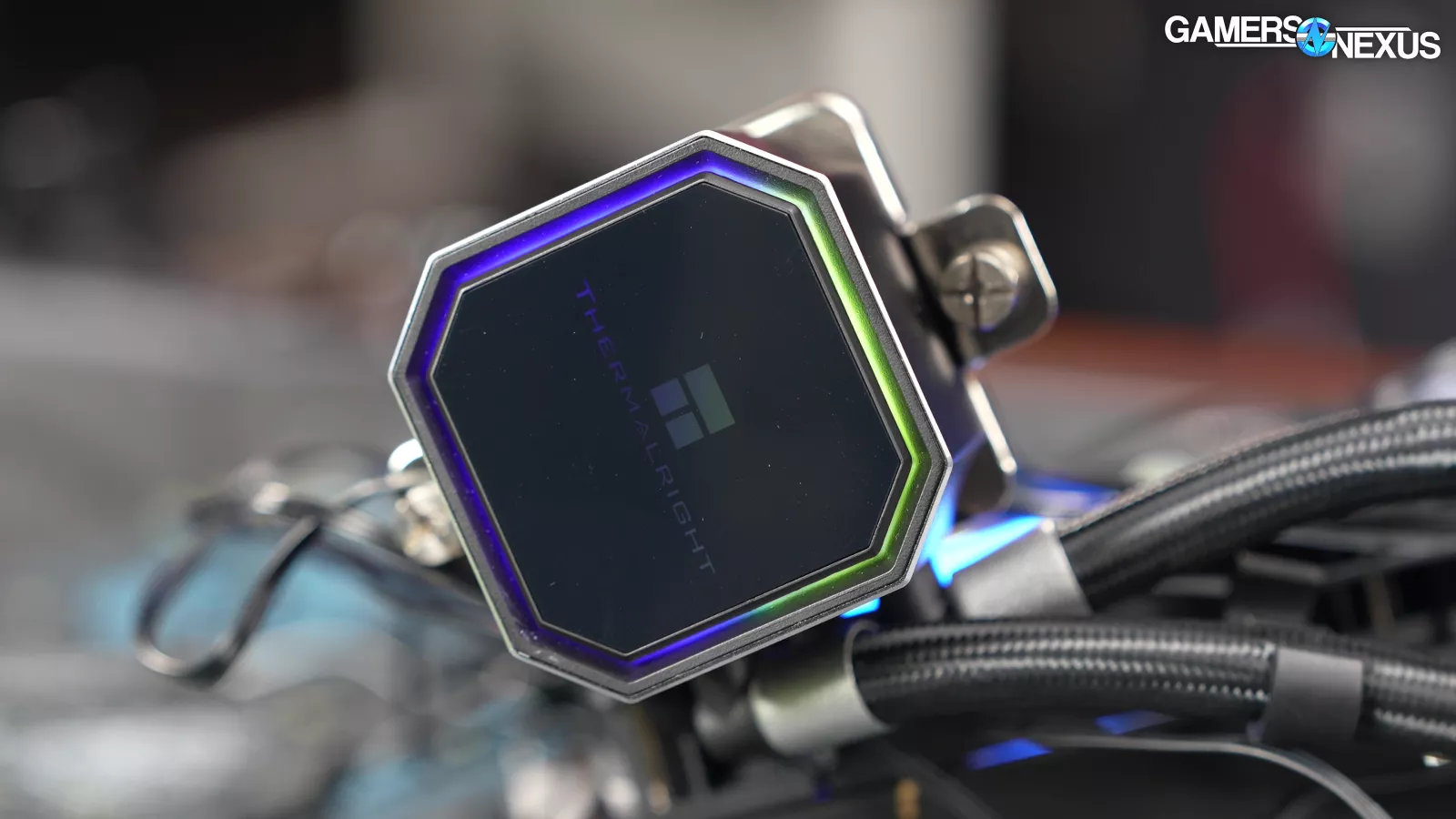
Thermalright uses plastic hose clamps to help hold the tubes closer to each other, it has silver-colored plastic joints at the barbs, and uses a pump cap with RGB LEDs of a Thermalright logo and illuminated octagonal light bar.
And that’s enough of the basics. The cooler doesn’t have a lot going on, which is expected.
For this testing, we’re using both AMD and Intel heat loads. The Intel heat load is relatively new and is 250W. We only have a few coolers on it. The AMD heat load has dozens of coolers.
Thermalright Frozen Prism 360 Thermals

Noise-Normalized 200W AMD Heat Load

We’ll start with our noise-normalized 200W heat load on AMD, then move to our Intel testing.
With all coolers using their included fans and set to the same target noise level, the Prism 360 ends up behind the Liquid Freezer III by about 3 degrees. In the world of coolers, this is a big gap -- but overall, the fact that a $60-ish cooler is anywhere near the top is impressive. The long-term viability becomes the biggest question mark.
Anyway, the Frozen Prism is about equal to the Liquid Freezer III when it’s in a reduced 280mm size. The closest air cooler on this chart is Thermalright’s own Peerless Assassin (watch our review) at 56 degrees, pushed below all the liquid coolers.
We’ve become used to every generation’s newest and highest-end liquid cooler being a new chart topper. In this instance, being anywhere near the other liquid coolers is an accomplishment for this cheap cooler and it’s certainly no chart topper but it’s definitely competitive.
100% 200W AMD Heat Load

100% fan speed on all coolers is up now. Thermalright’s Frozen Prism hits 53dBA here with our prior noise testing methods, which has it louder than the now-banned DeepCool Mystique 360 and significantly louder than the not-banned Arctic Liquid Freezer III 360, which was about 40dBA in this testing process. That’s a big noise advantage for the Arctic solution. Thermally, it’s within error of the Thermalright Frozen Prism, so the Liquid Freezer III is definitely a substantially better cooler than the Frozen Prism. Even still, the Prism does OK to brute force its position. It manages a top rank, despite achieving it in an acoustically inefficient way.
100% 250W Intel Heat Load

In a quick test with a 250W Intel LGA1700 heat load, we found the Frozen Prism to perform about the same as the DeepCool Mystique and its quieter solution. The Liquid Freezer II 420 is noticeably quieter at 100% fan speeds, down at around 45 dBA, and was less than 2 degrees warmer than the Frozen Prism when using the Thermalright contact frame. That’s not like-for-like, though: Comparing with the Intel ILM, the LF II 420 ran at 63 degrees to the Frozen Prism’s 57, which has the advantage of running louder but the disadvantage of radiator size.
The Liquid Freezer III exhibits the issues we mentioned in our review of the newer Arctic cooler, where the contact frame is not allowing ideal contact with the LGA 1700 solution and is falling behind in some ways. Still, the 360 model at least managed a 58.8-degree result at a substantially and noticeably quieter noise level at 100% as compared to the Frozen Prism. The perceived noise difference to the human ear would be about 2x louder.
With the Frozen Prism at 35dBA, it ran at 65 degrees P-core and 58 all-core average (over ambient). That means the Liquid Freezer III at 39.8 dBA has about a 6.2-degree advantage (although it is louder here).
This dataset was intended to be for a limited time while we move over to our new numbers, so it’s relatively slim compared to our AMD numbers. We have a new Intel LGA1700 dataset rolling out in a week or so.
Laser Scans - Thermalright Frozen Prism 360 Cold Plate
Next up, our laser scanner will give us a look at the Thermalright Prism. The laser scanner is an industrial tool we bought for evaluating cold plate design, IHS curvature or convexity and concavity, and device flatness. We got heavy use out of the machine recently when we tested some custom-made “golden sample” coldplates for Intel and AMD.
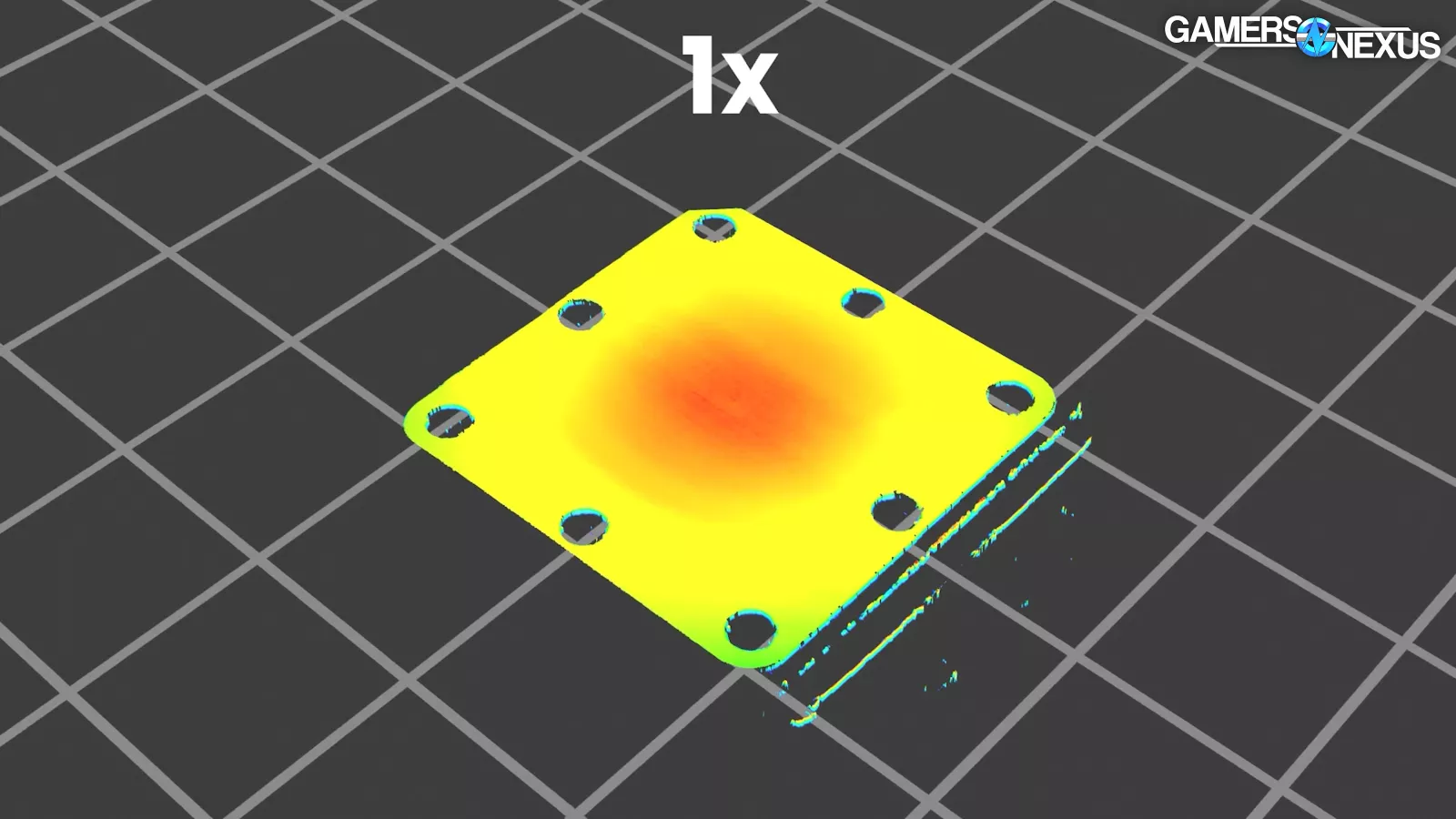
For the Thermalright Frozen Prism, you can see at 1x zoom, the central area is curved toward the laser, which is indicated by that red part of the heat map. That’d make it convex toward the CPU, which is typically concave for Intel CPUs. We showed this in our IHS scans previously for the Scythe content.
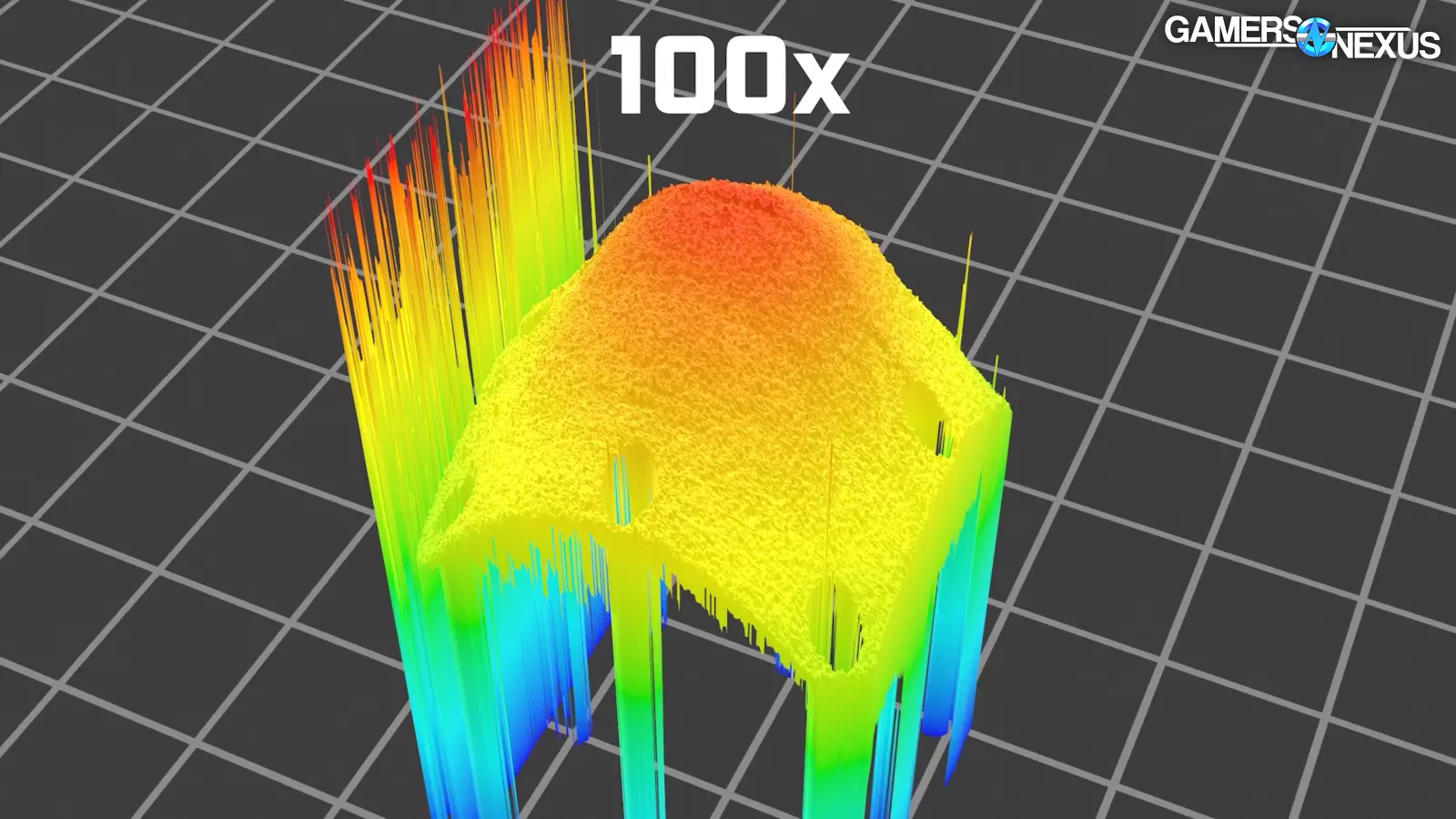
At 100x magnification, you can see that the entire center of the cooler protrudes toward the CPU IHS. This is obviously magnified to exaggerate it, but it helps illustrate the point. It also helps explain some of the stronger performance in some tests.
Thermalright Frozen Prism 360 Pressure Scans
Pressure Scans - AMD
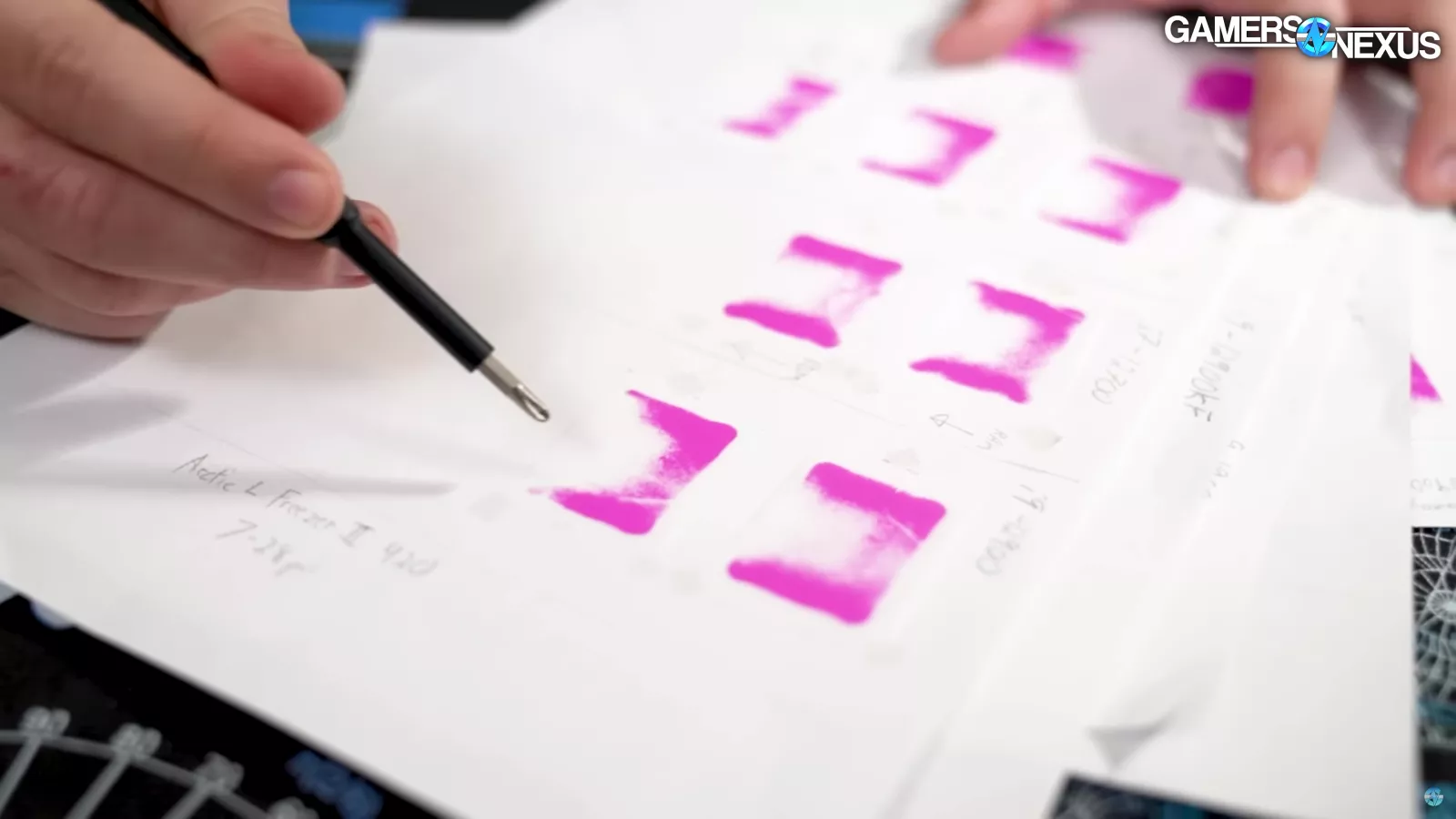
We’re looking at pressure scans next. These are taken with a special chemically reactive paper and then scanned using a special software and scanner combination. The end result allows us to evaluate the pressure applied to the IHS by the coldplate when under the mounting force of the cooler’s included mounting hardware. Effectively, it’s an evaluation of the mounting hardware and not just the cold plate.
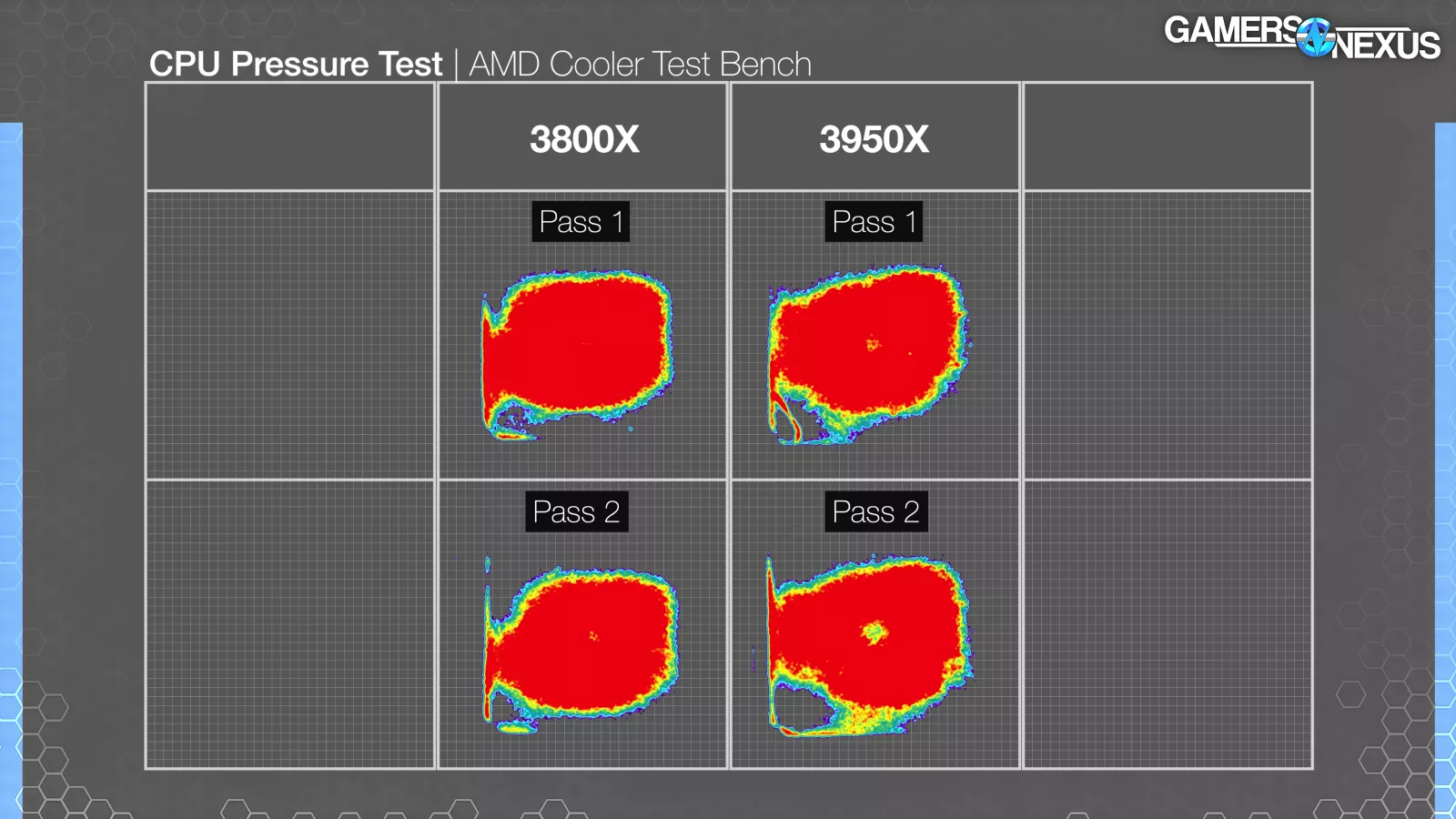
We’ll start on the AMD platform. Here, we observed super high pressure almost circularly around the middle of the IHS. This appeared on both CPUs we tested. That high central pressure is what we recently found to produce the best performance when we did our Scythe cold plate engineering deep-dive video.
Pressure Scans - Intel
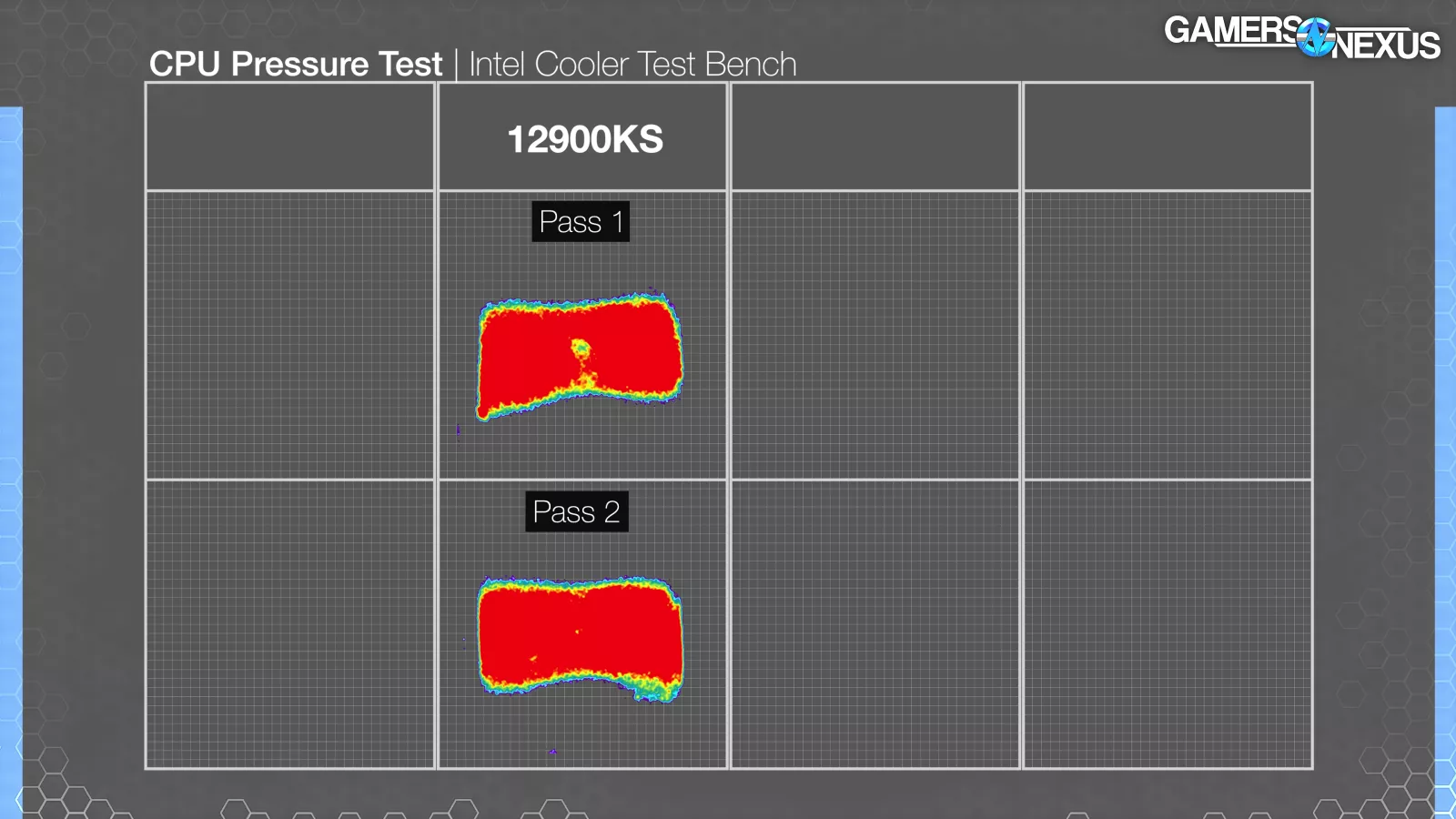
On Intel, the pressure scans showed good contact across the center channel of the IHS. It’s lacking on the far sides nearest the ILM clamp points, but the cold plate is making good contact everywhere the silicon is present. This high pressure across the die area likely explains the performance we saw earlier -- that plus the louder fans when at 100% load.
Installation
Now we’ll get into the installation process.
Thermalright Frozen Prism 360 AMD Installation
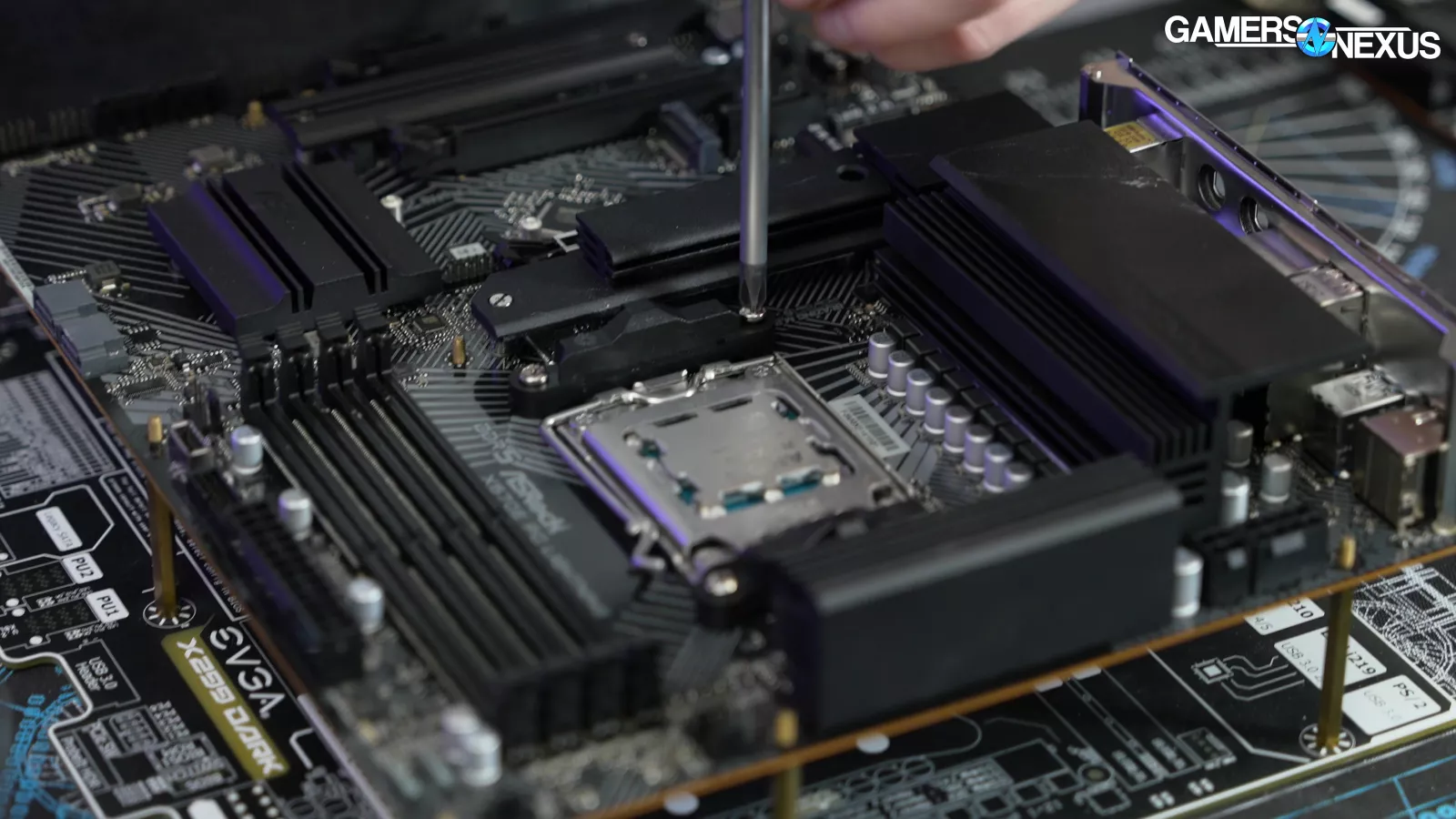
The first step on AMD’s platform is to remove the stock mounting brackets.
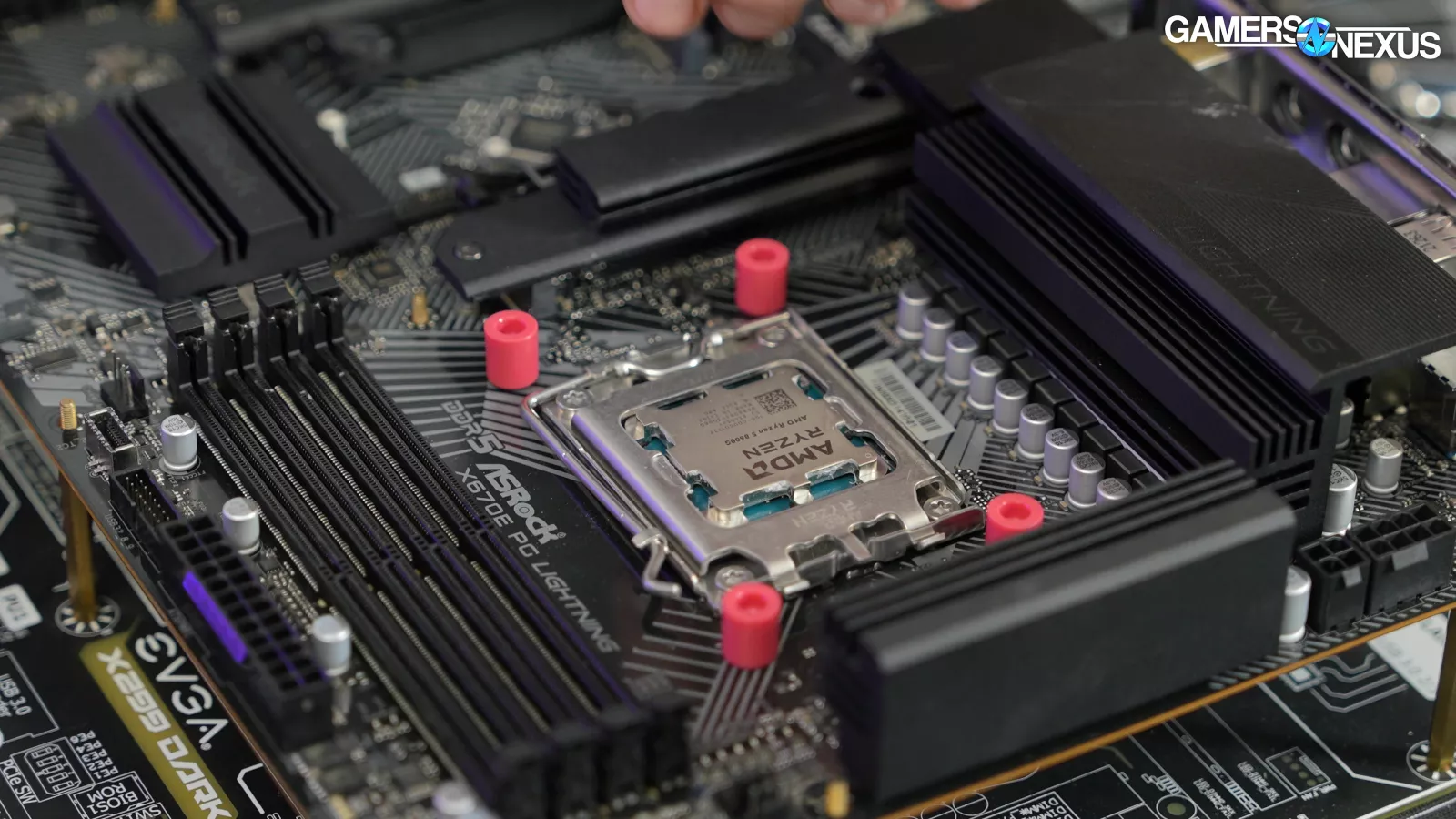
Once those are off, install the 4 standoffs that go over the protruding part of the backplate.
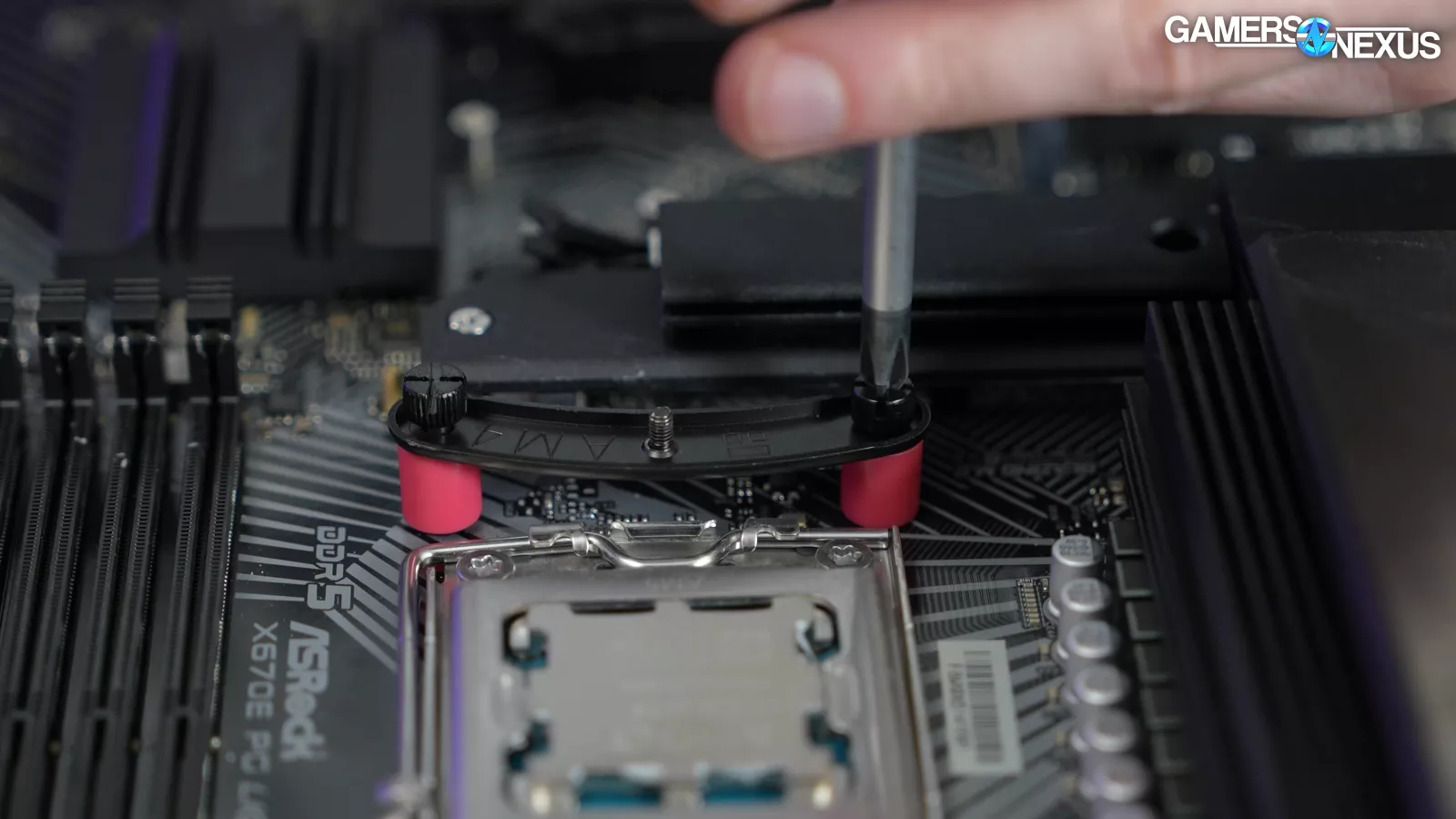
Once those are in place, it’s time to install the brackets with their respective screws.
With the thermal paste applied, it’s time to place the cold plate down onto the IHS and tighten both screws.
Thermalright Frozen Prism 360 Intel Installation
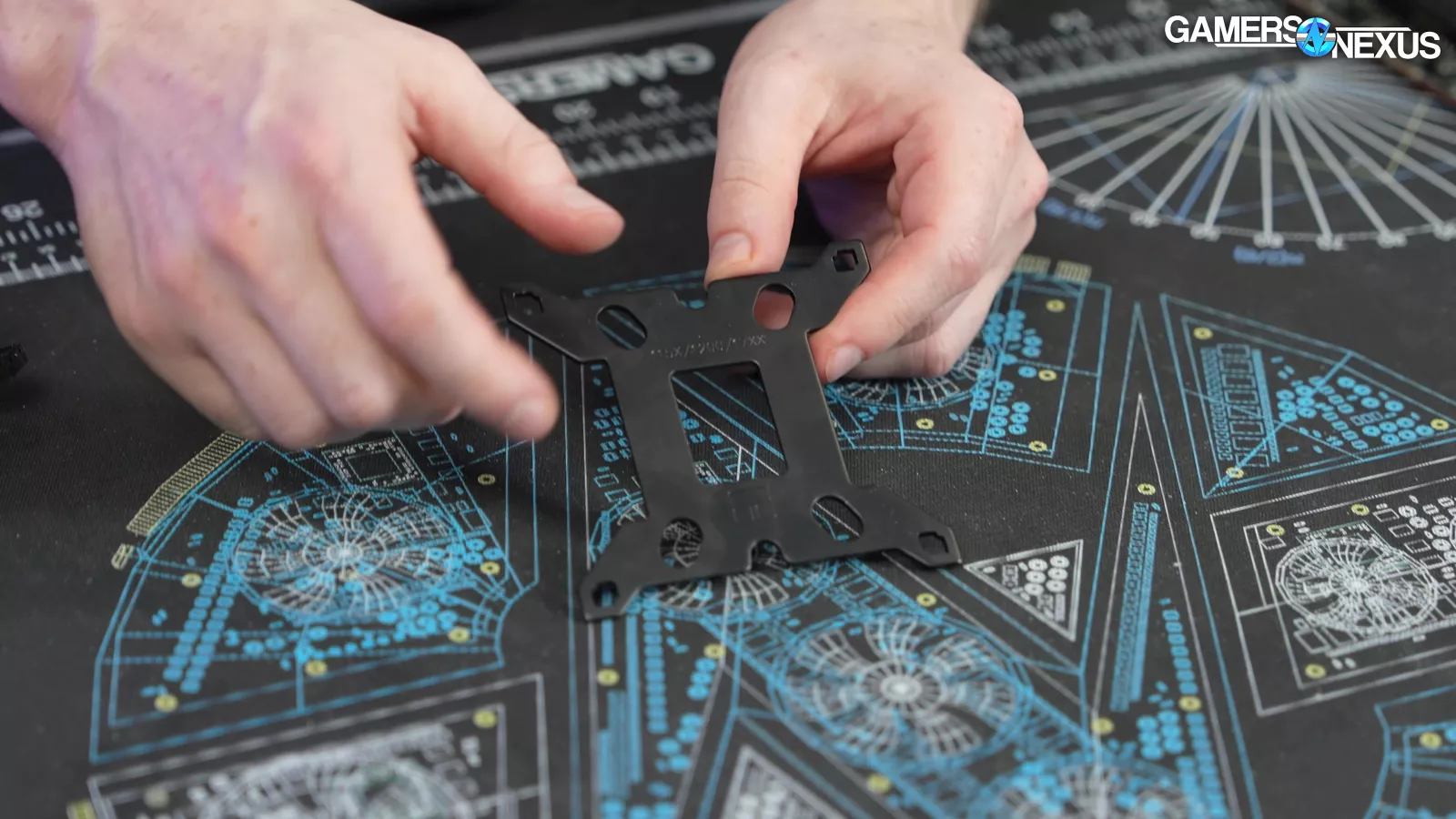
For installation on Intel, you’ll start by grabbing the backplate and ensure that the logo/labeling faces away from the motherboard.
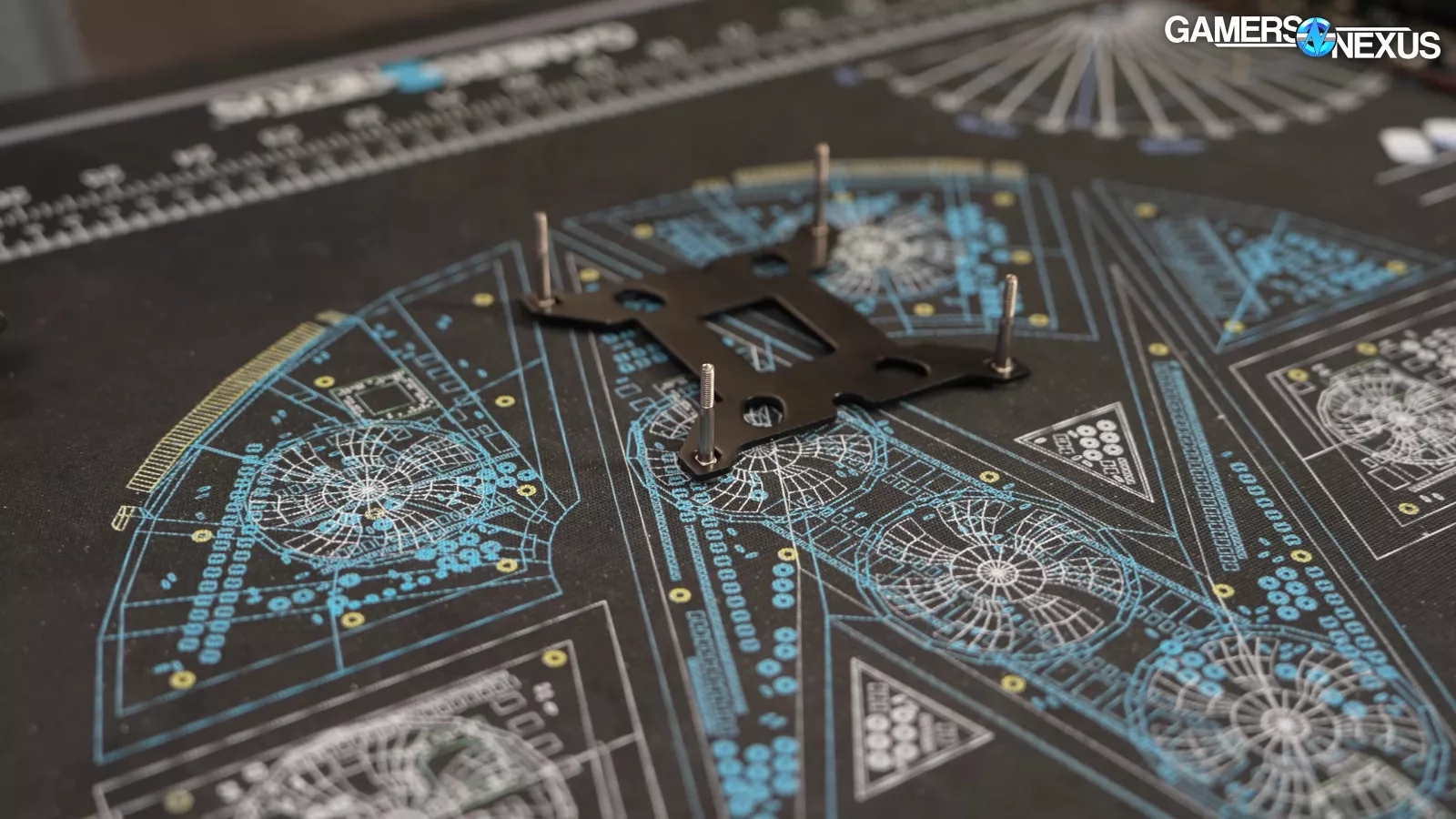
Once that’s established, it’s time to install the standoffs into place. We used the farther outer positions for LGA 1700.
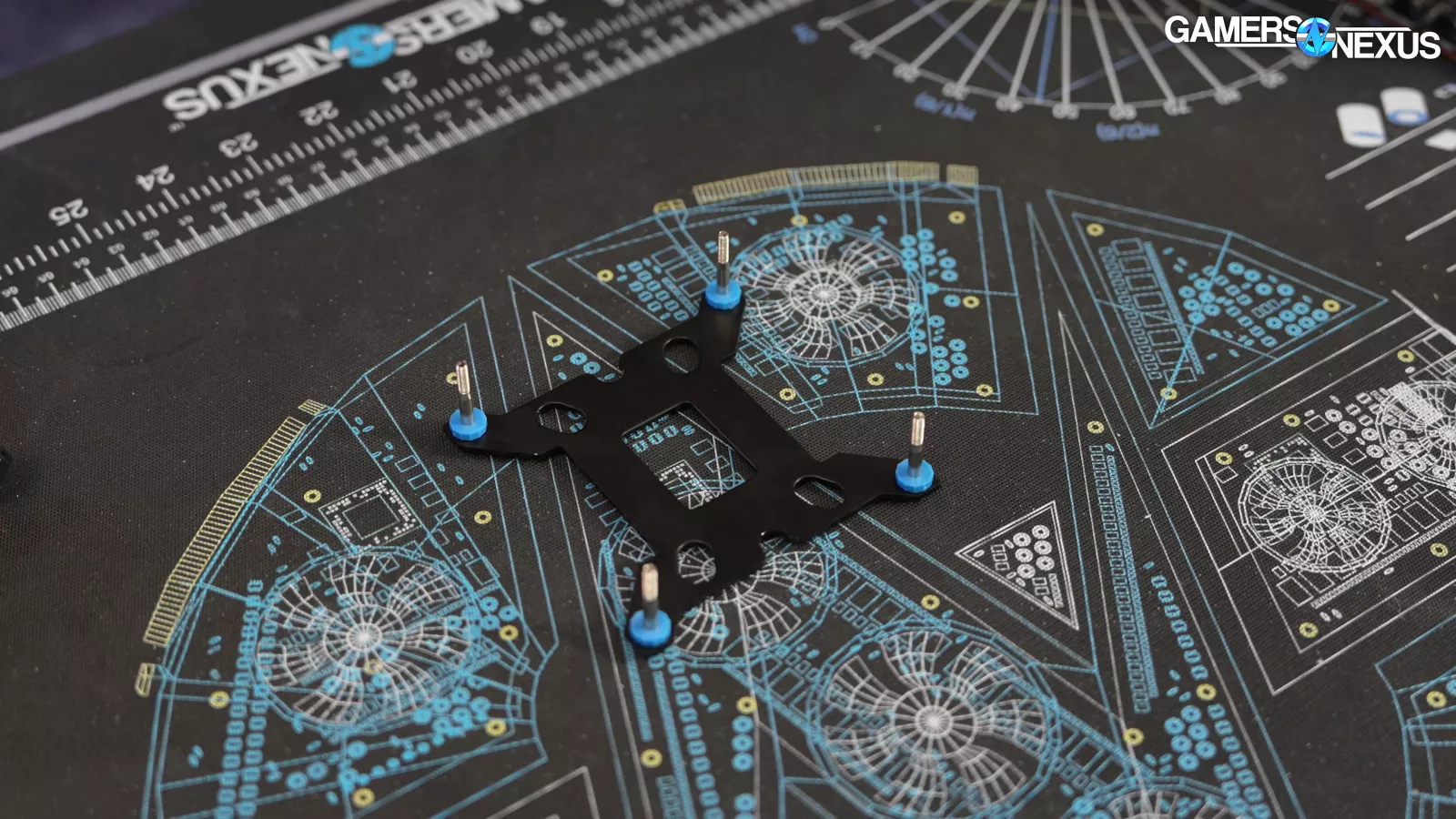
With that done, it’s time to slide on the blue retaining washers, which help hold the standoffs in place.
Once that’s squared away, it’s time to drop the motherboard down into place and then place down the top portion of the standoffs into position.
From here, install the mounting brackets, ensuring that they’re laid out in the correct position for your CPU (We used the middle position for LGA 1700), and secure them with 4 nuts.
Ensuring that there’s thermal paste, it’s then time to install and tighten the cooler.
Installation Feedback
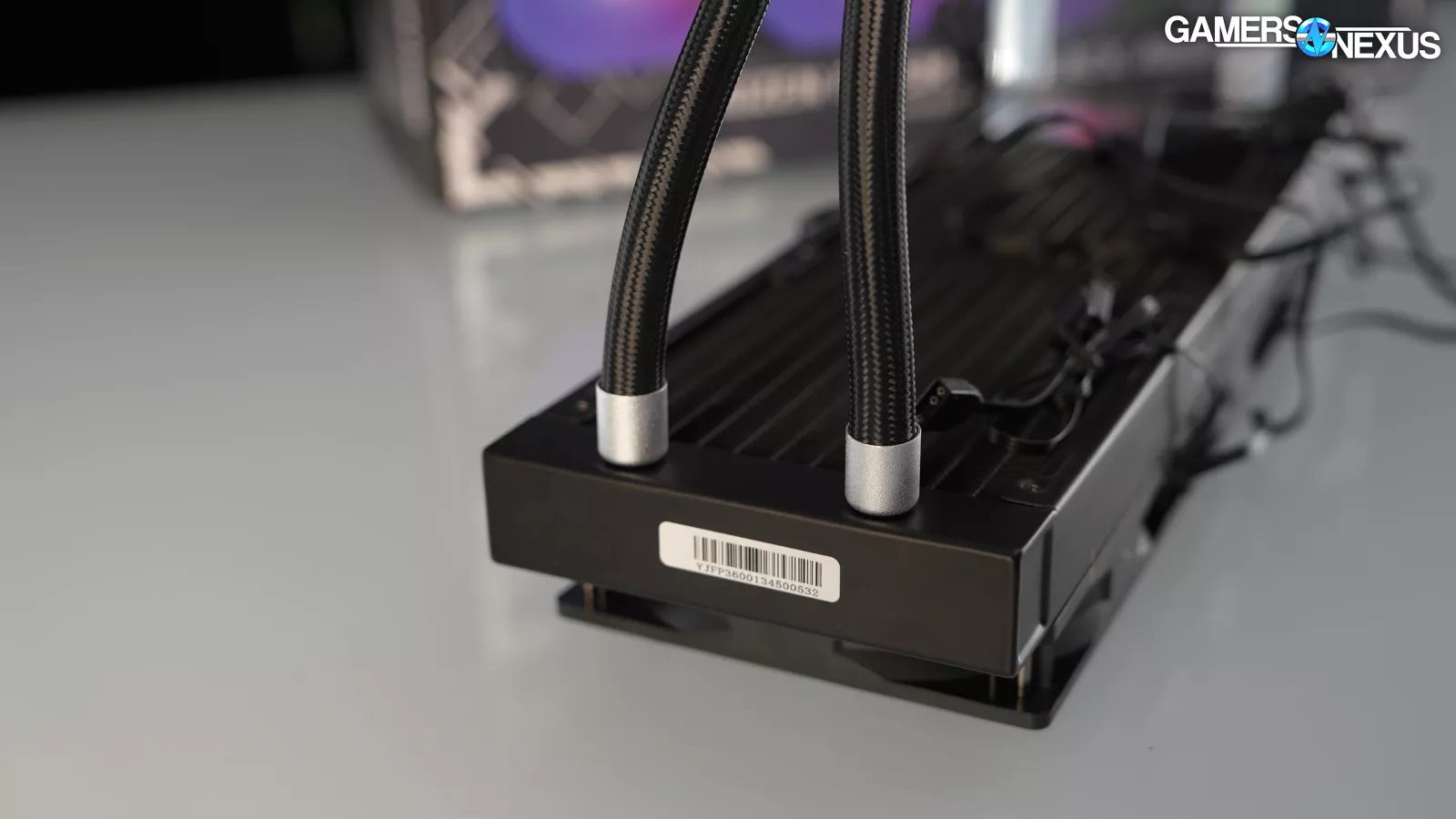
The only thing to be aware of with the cooler is that the tubes are a little stiff, which makes it potentially a poor candidate for a case that has some tight spaces.
Thermalright Frozen Prism 360 Conclusion

It’s hard to beat at $60. Thermally, the cooler isn’t the best when considering the whole picture, but it’s also not bad. When we were at Computex this year and spoke to cooler manufacturers, everyone was talking about Thermalright. The collective comment from their competition came back to an uncertainty of how Thermalright can set the prices it can and make any money. In any case, they’re managing it.
The cooler uses a heavily convex cold plate to mate with the concave IHS of Intel, which seems to work for it. Its pressure patch is largely focused on the die area for both AMD and Intel. Acoustically, it’s not a strong performer. The Frozen Prism is weaker than competition when looking at the full picture of thermal results at a given noise level.
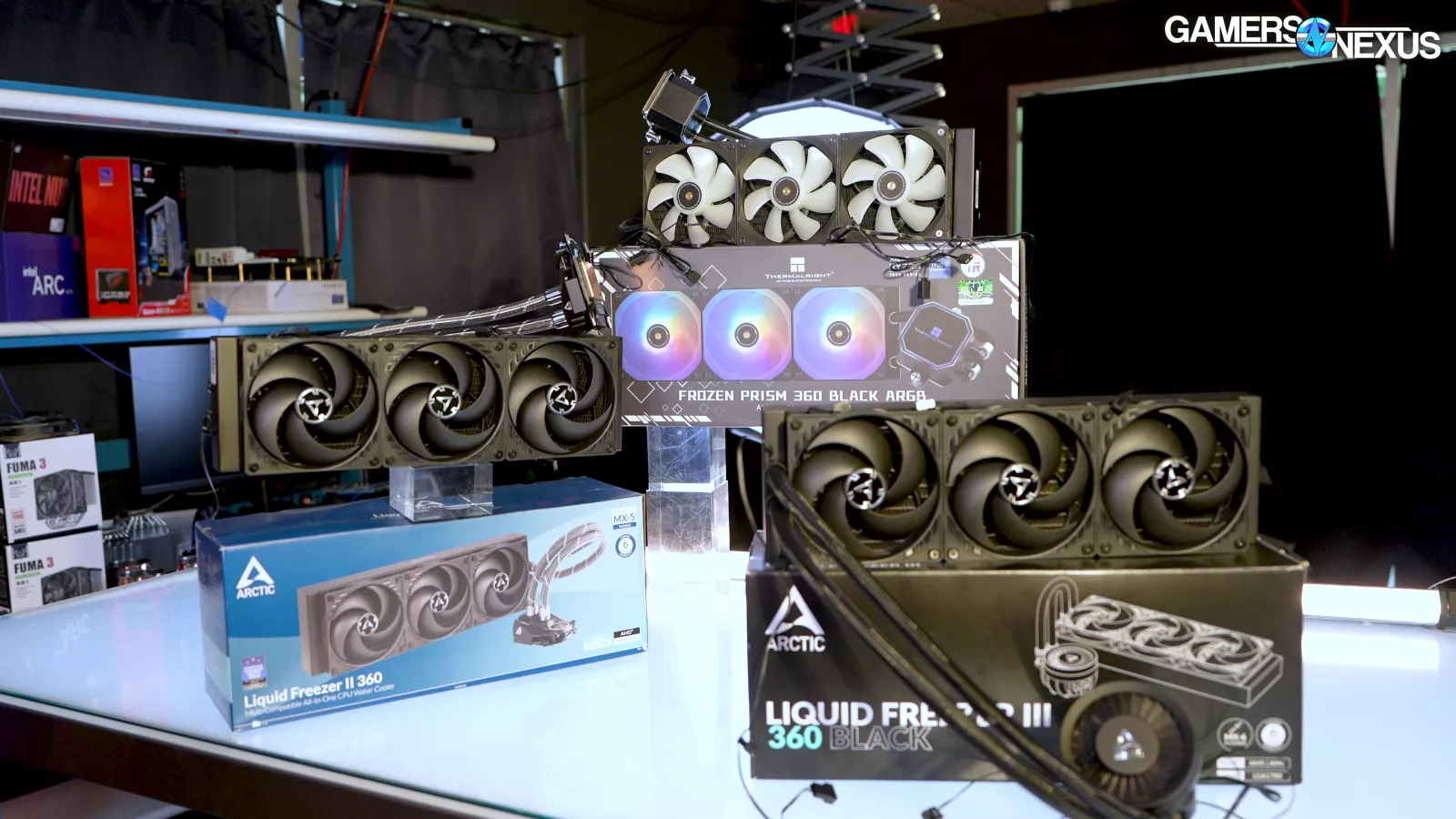
But we keep coming back to the same thing: It’s $60. Air coolers can’t compete with liquid in scenarios like this, but the best ones to consider also include a Thermalright solution: The Peerless Assassin 120.
As for competing liquid coolers that we’ve tested, the Arctic Liquid Freezer II remains a GOAT and the ARGB 420mm variant has periodically dropped to $100, which itself is an amazing price.
The real question is going to be the endurance and long-term viability, but maybe a roll of the dice on replacing a $60 cooler with another one isn’t so bad. Overall, though, we’re impressed with it.
